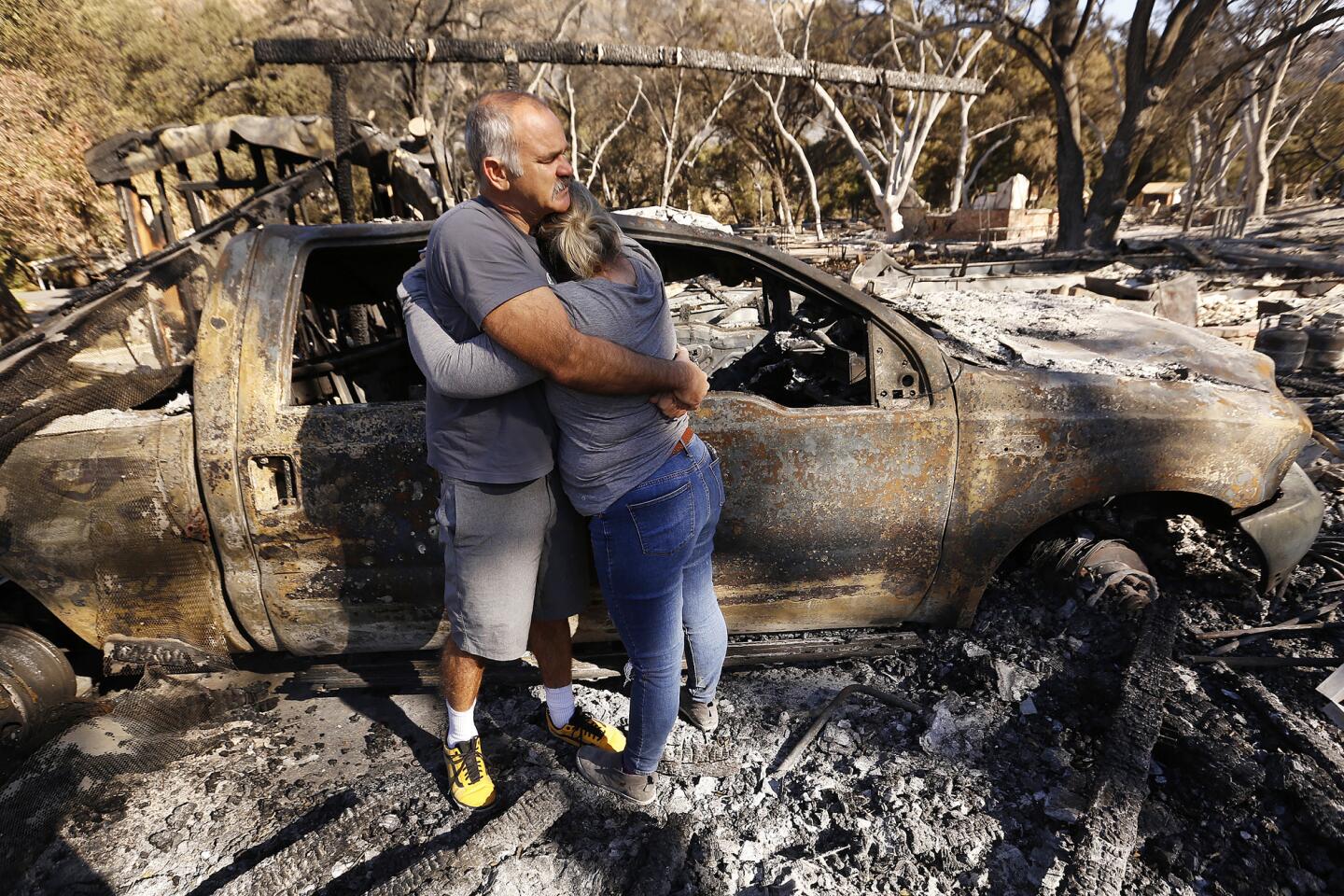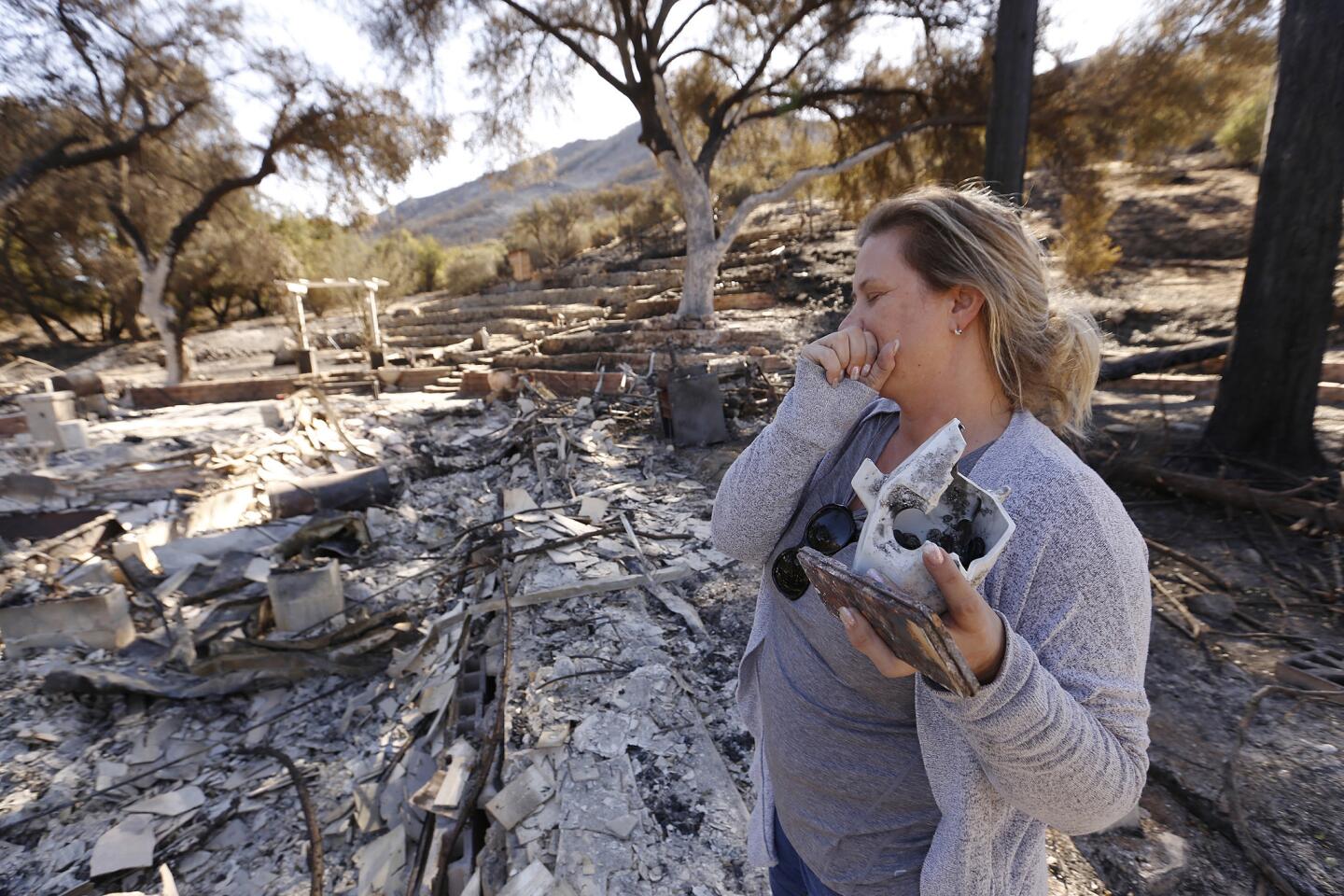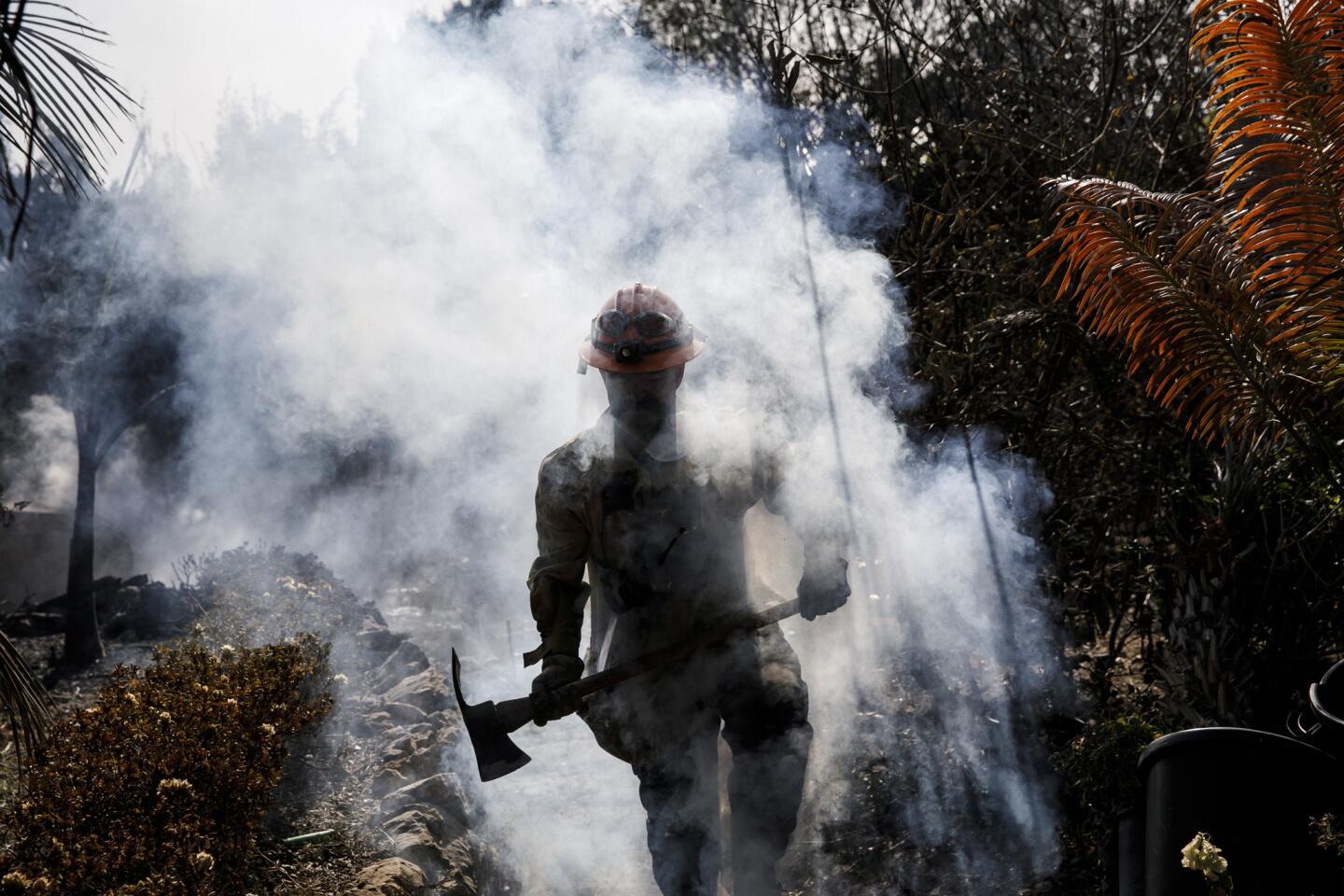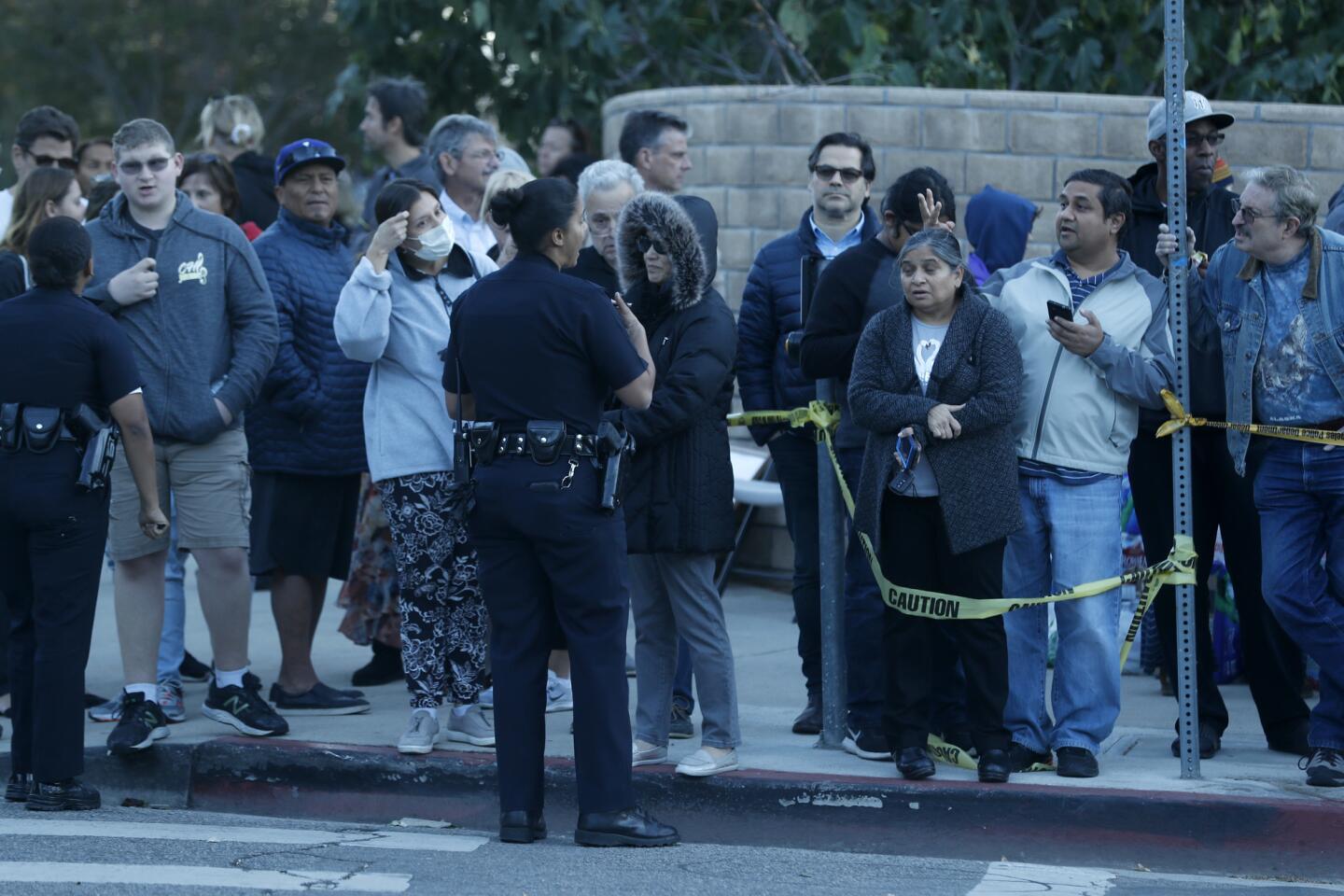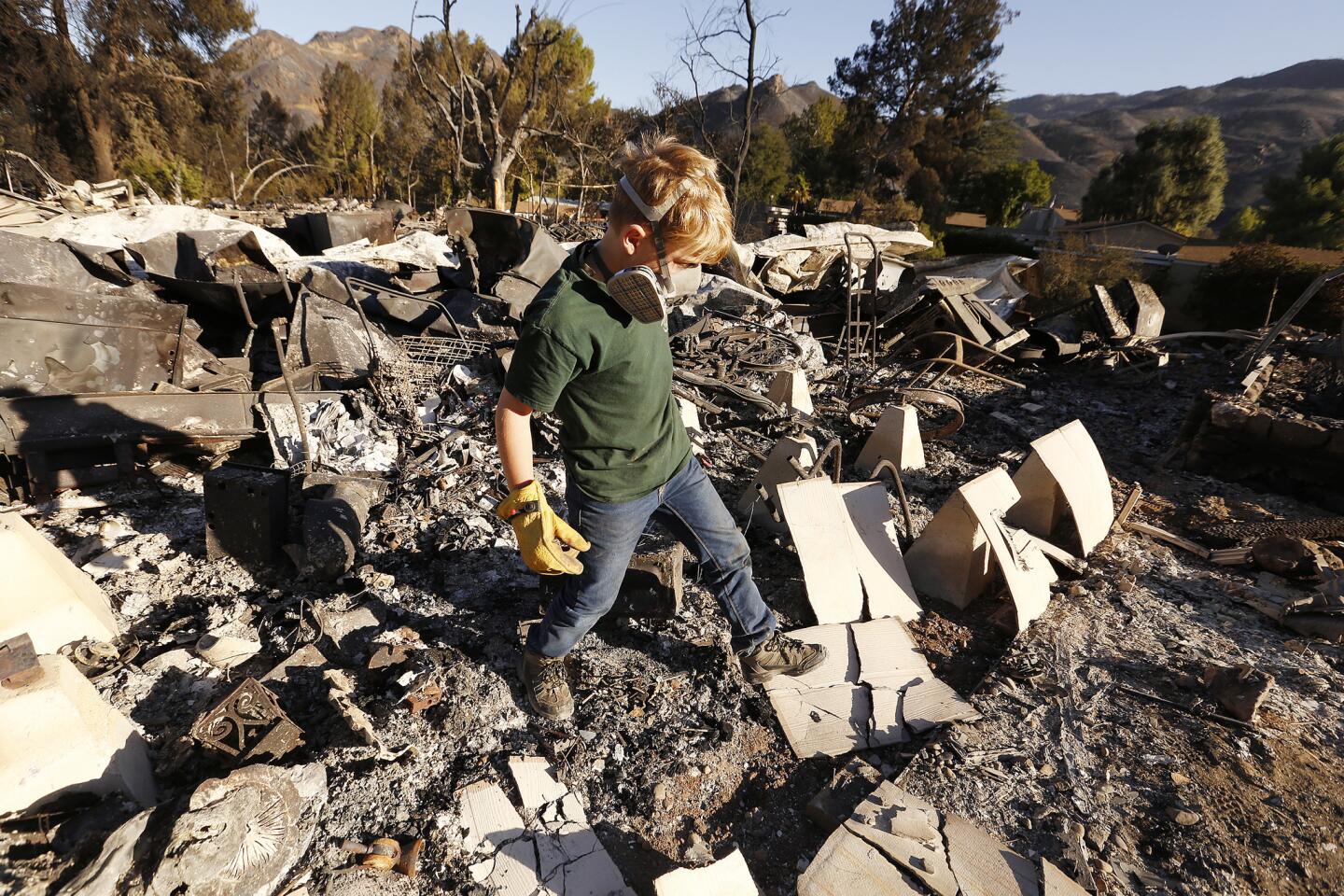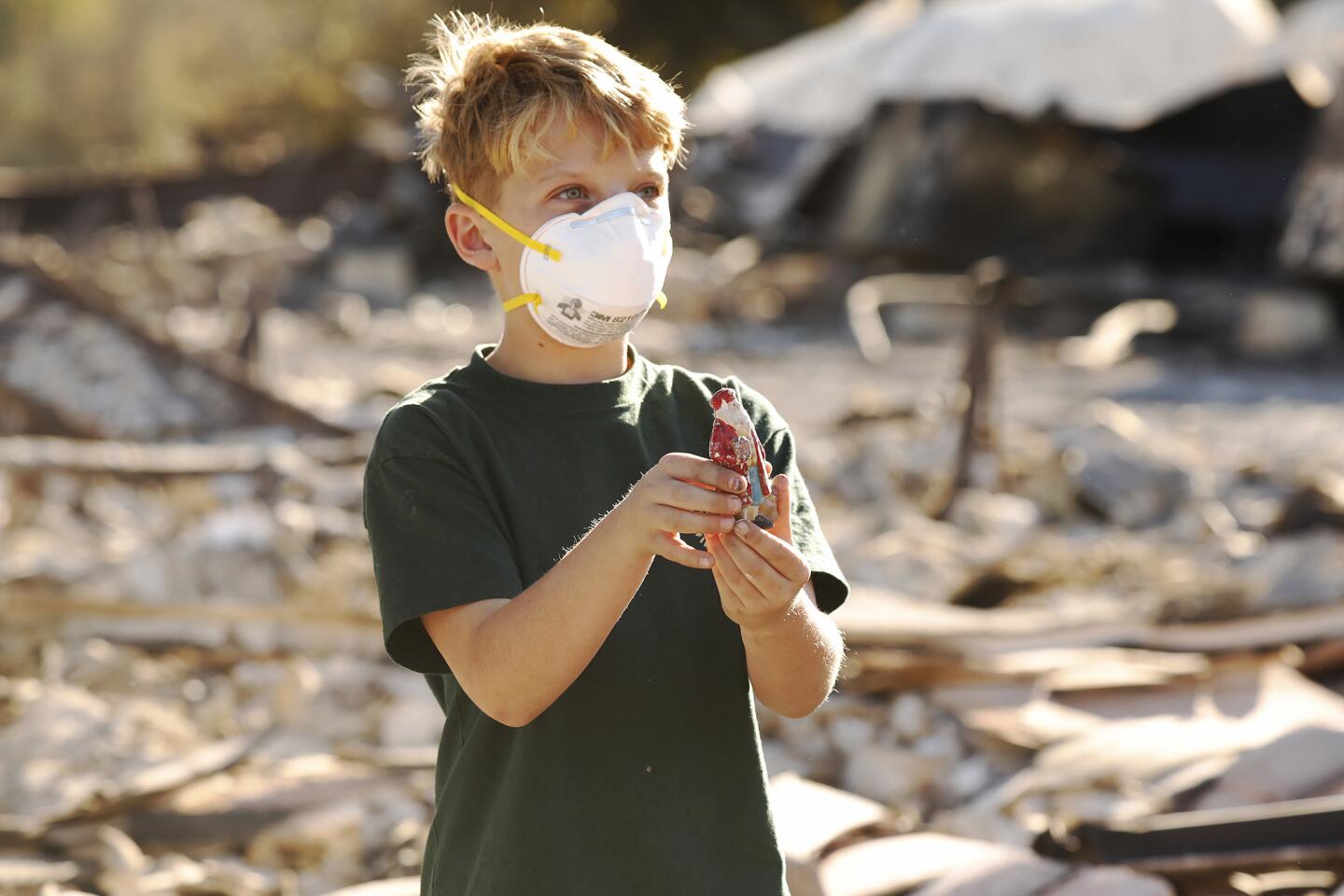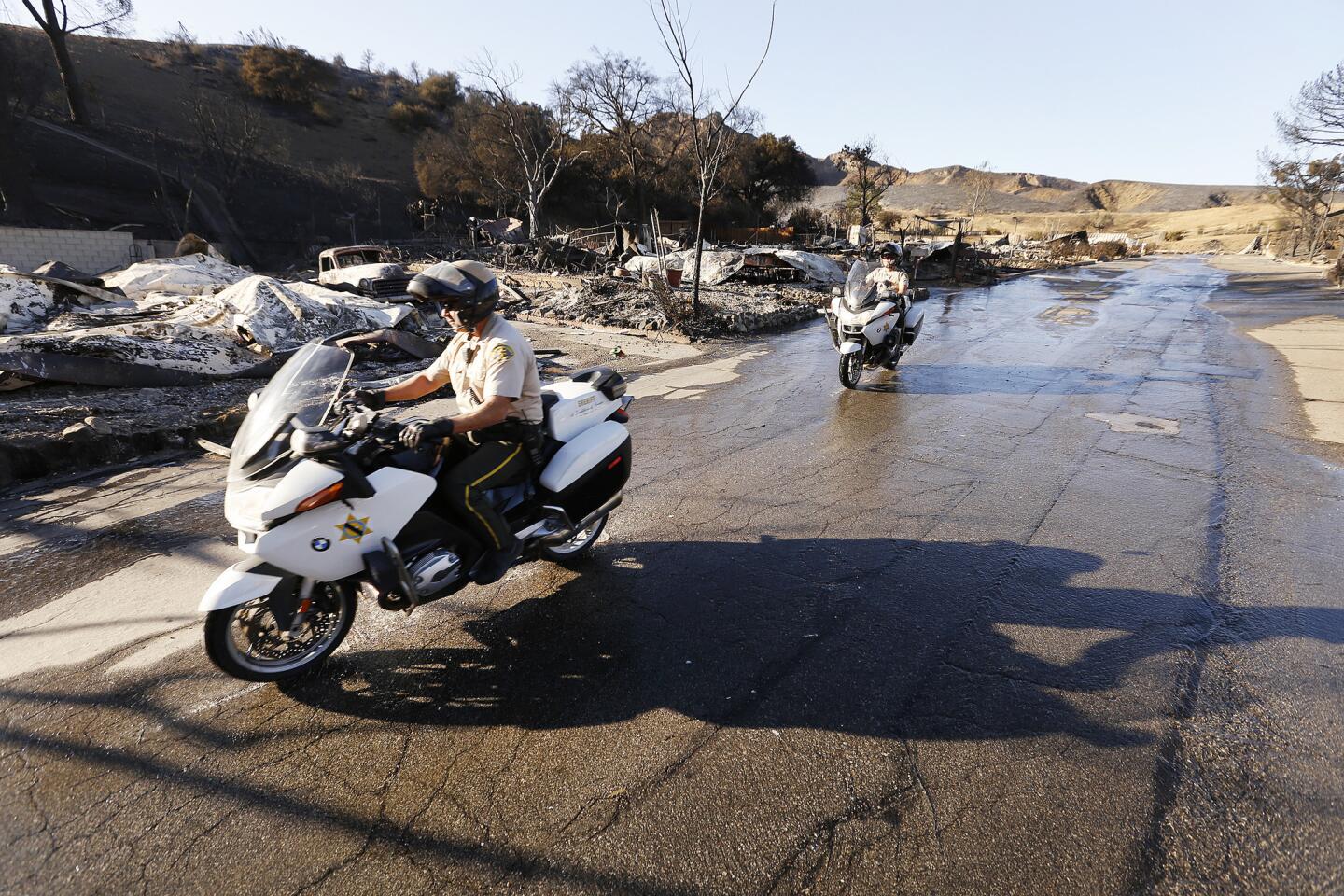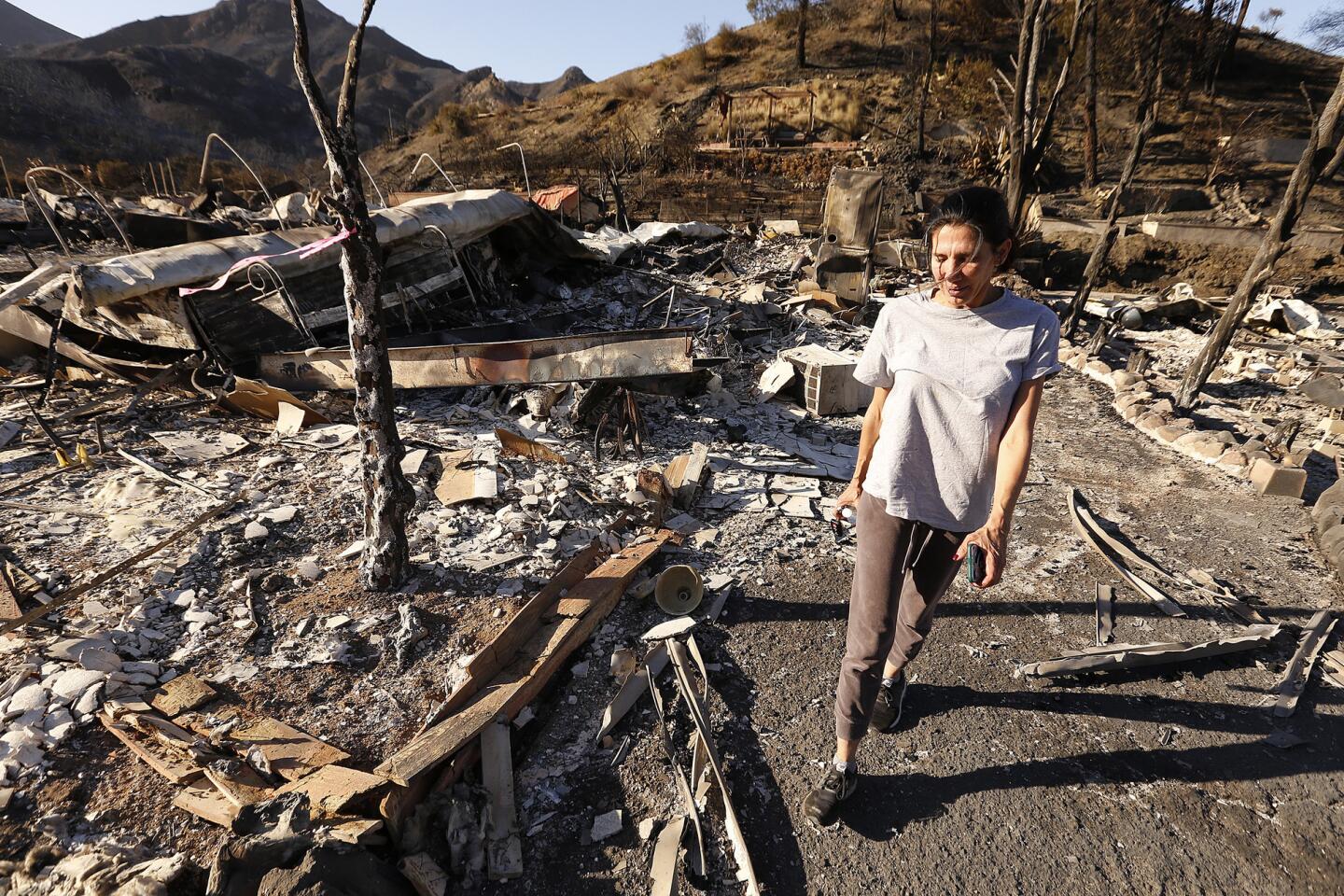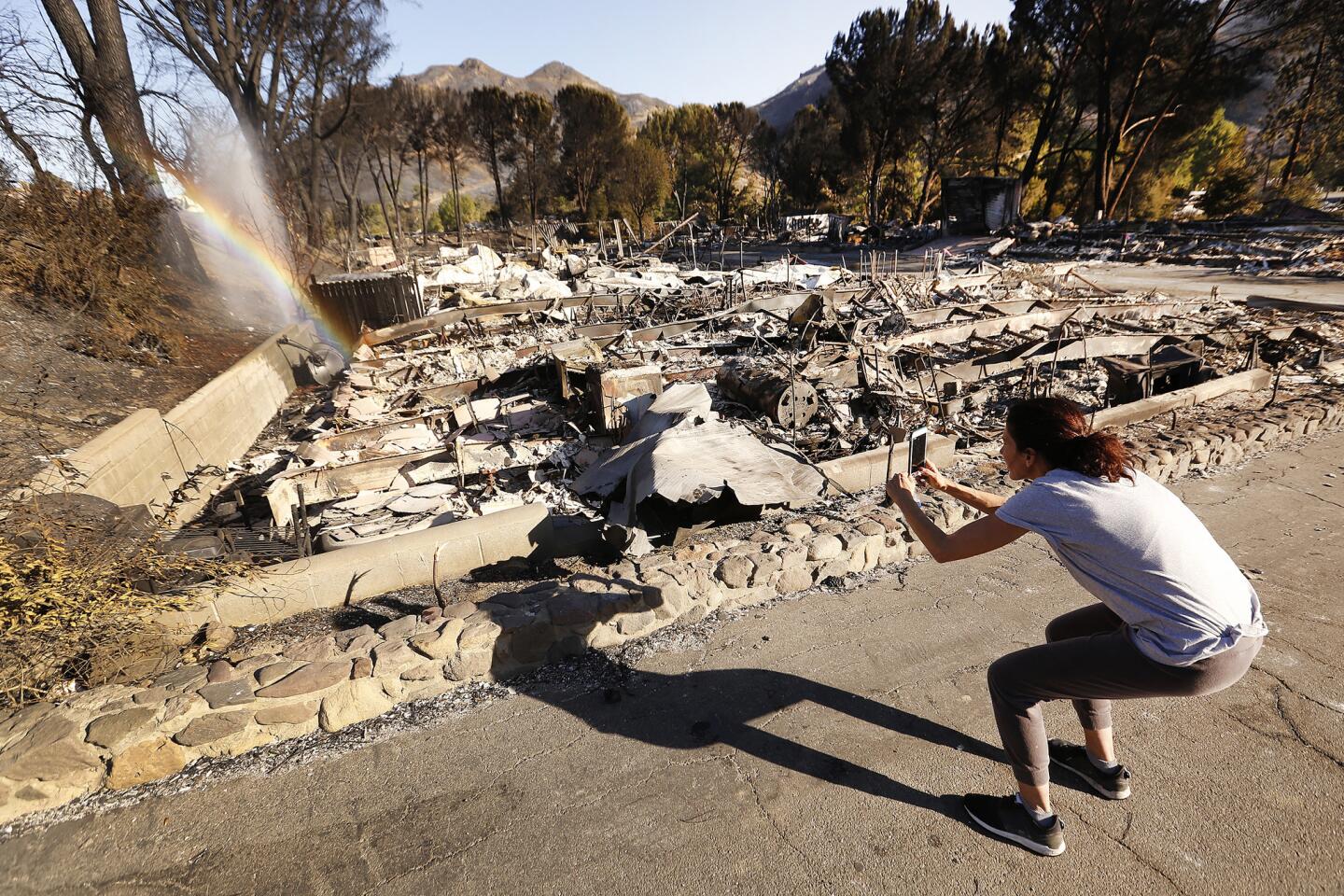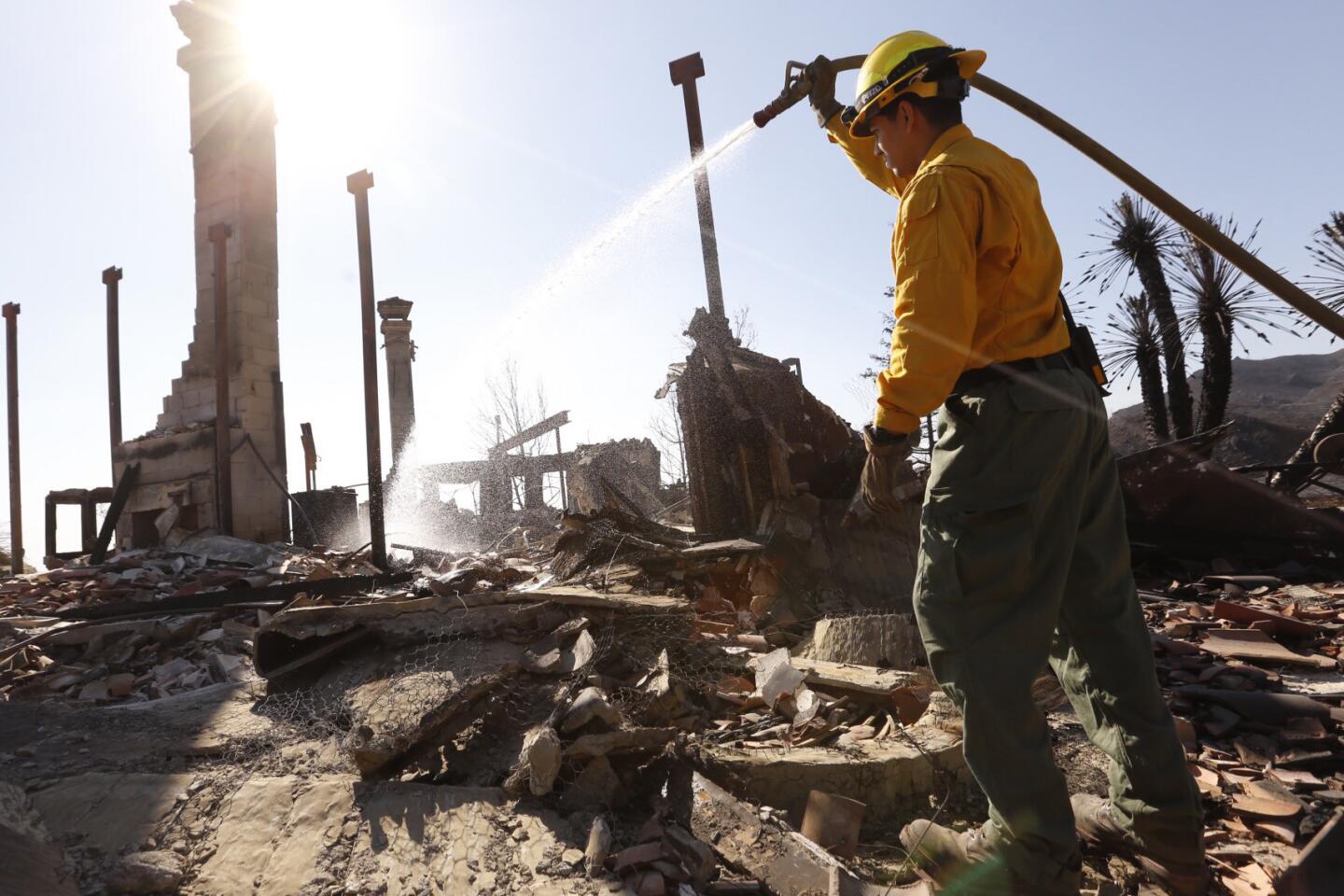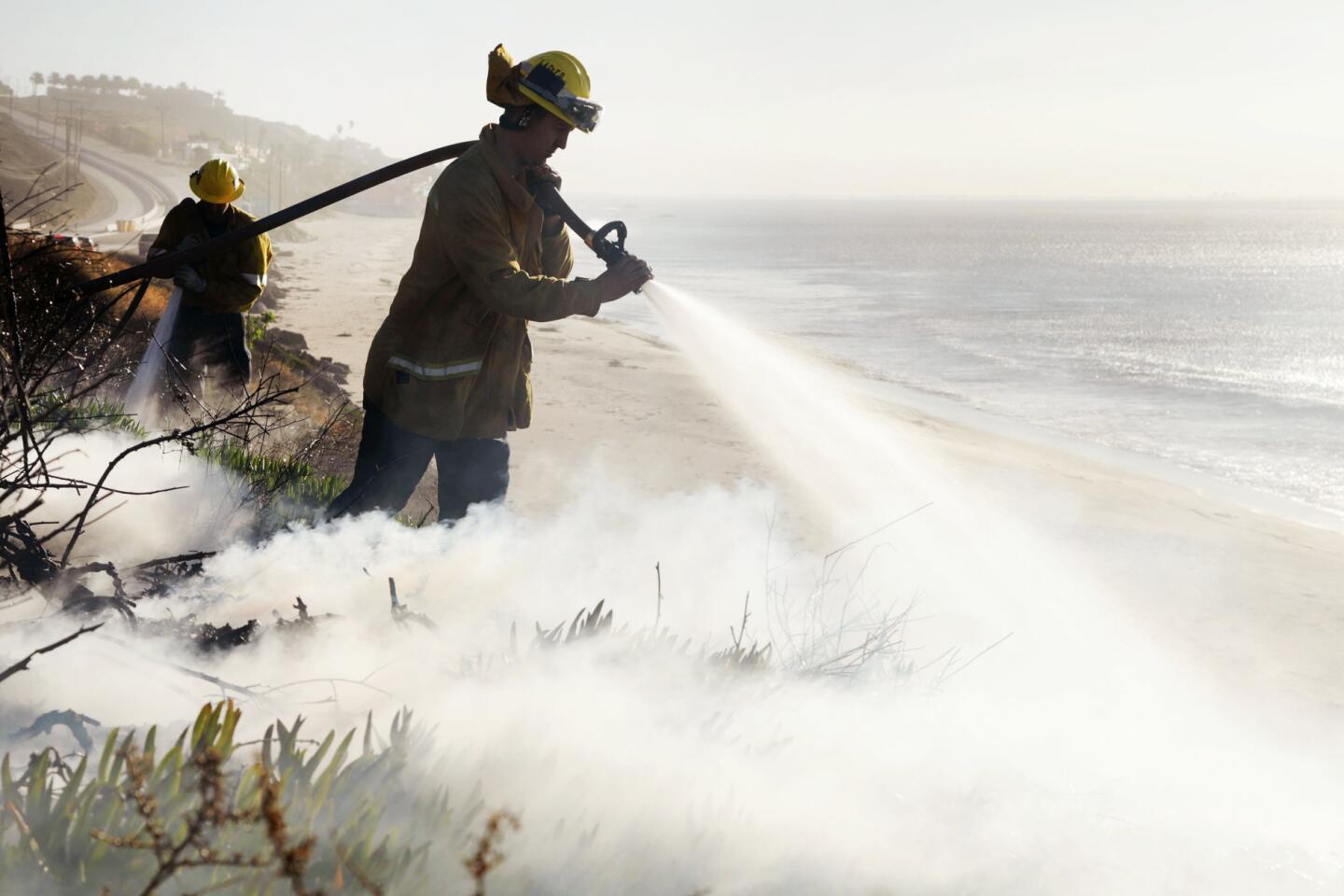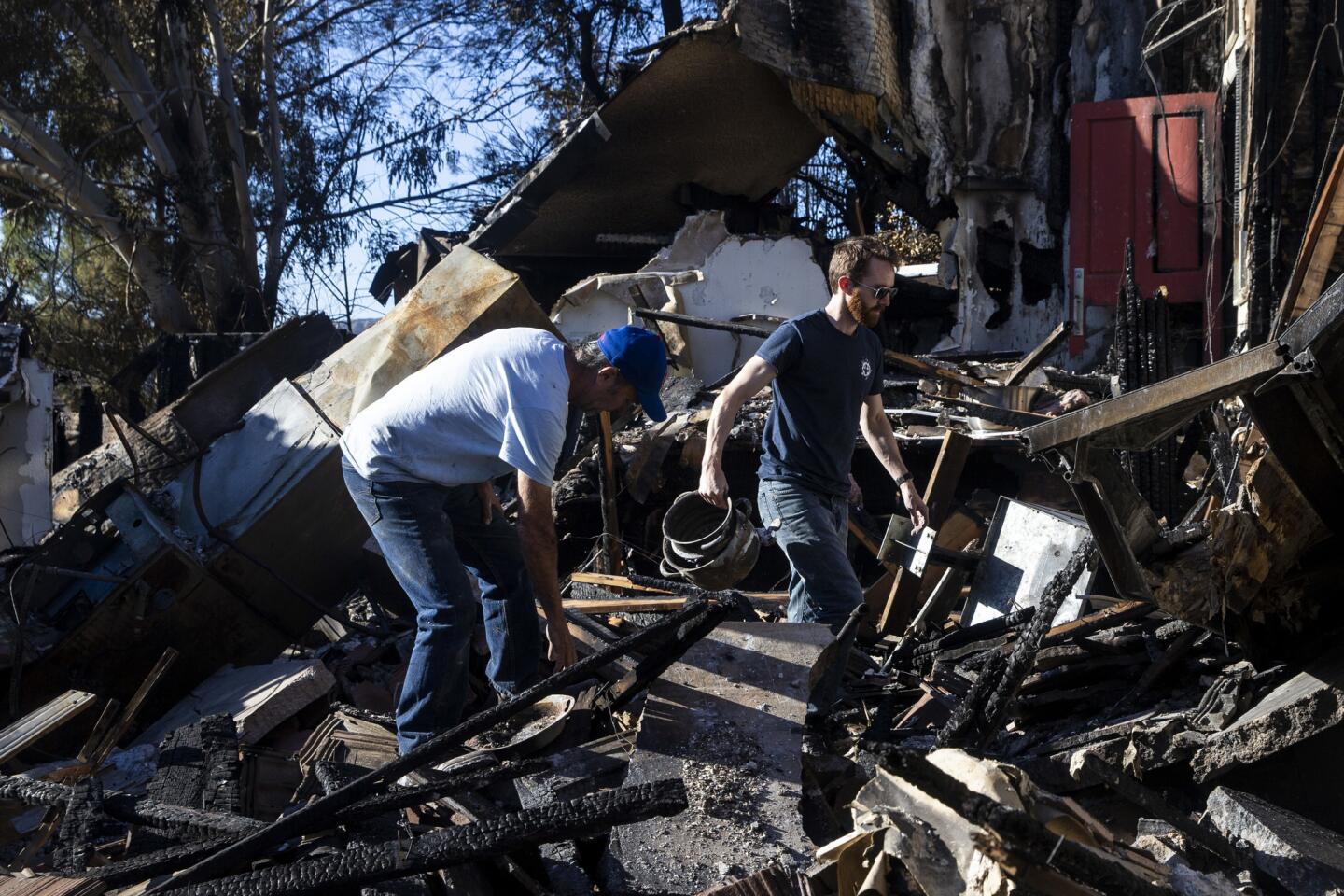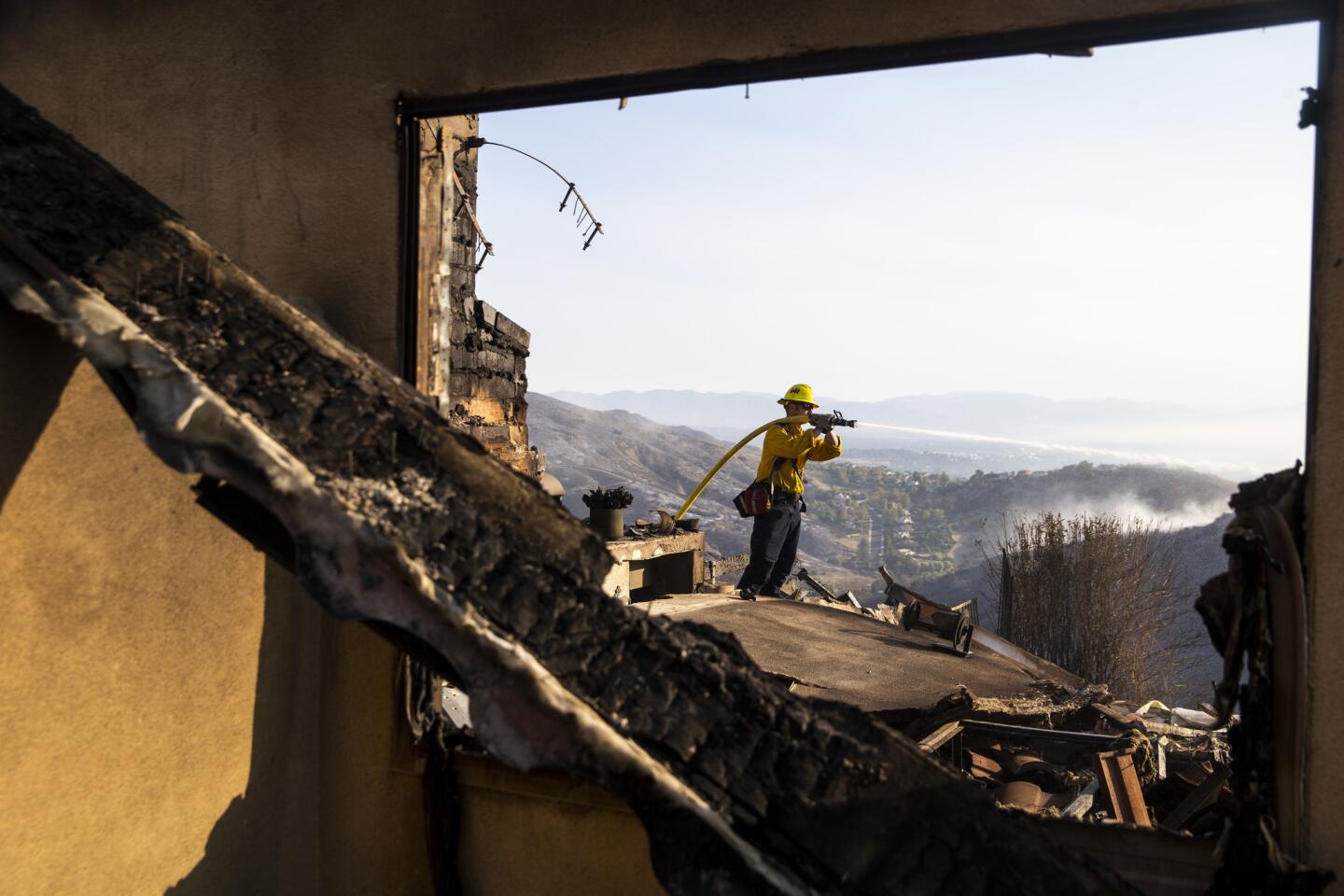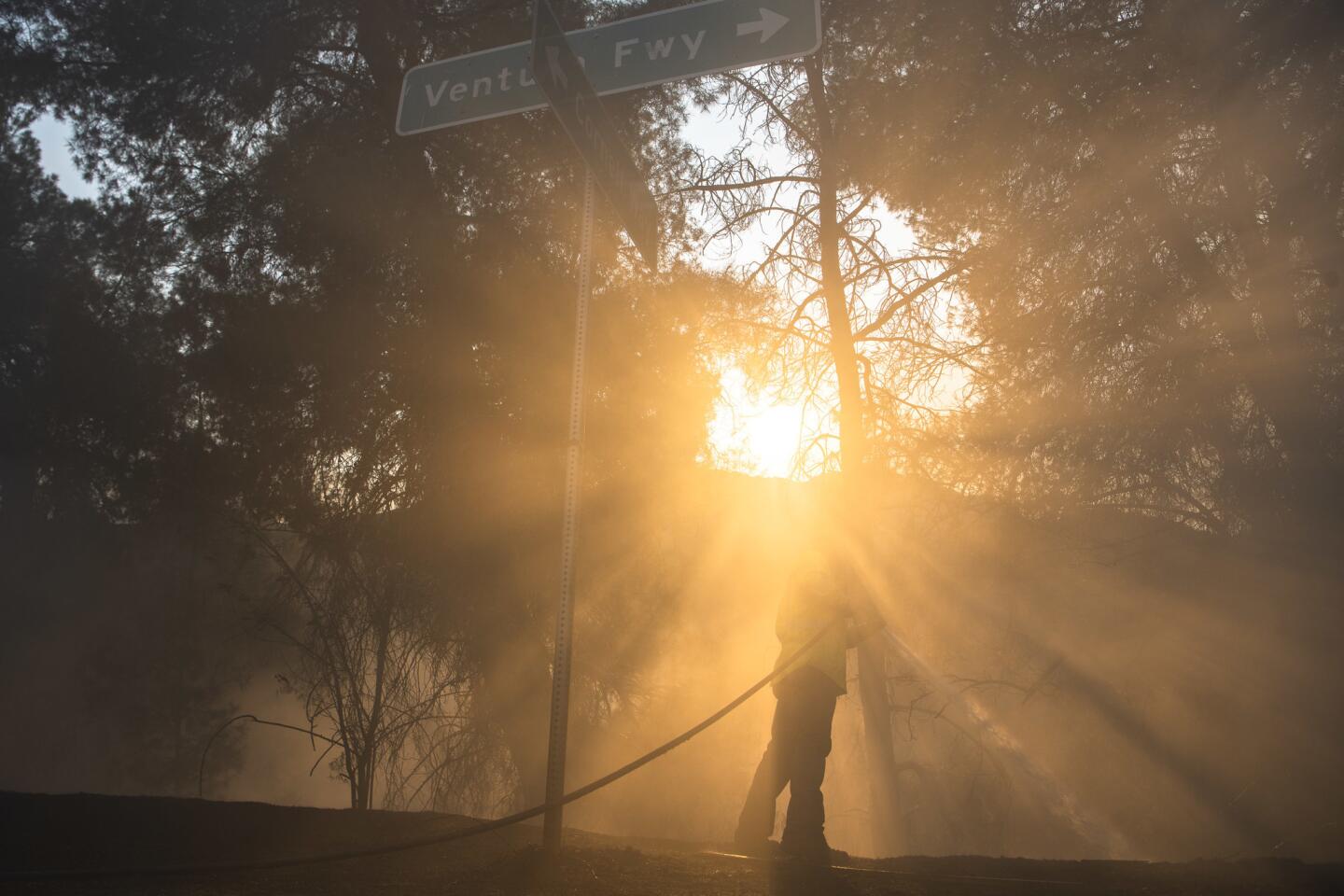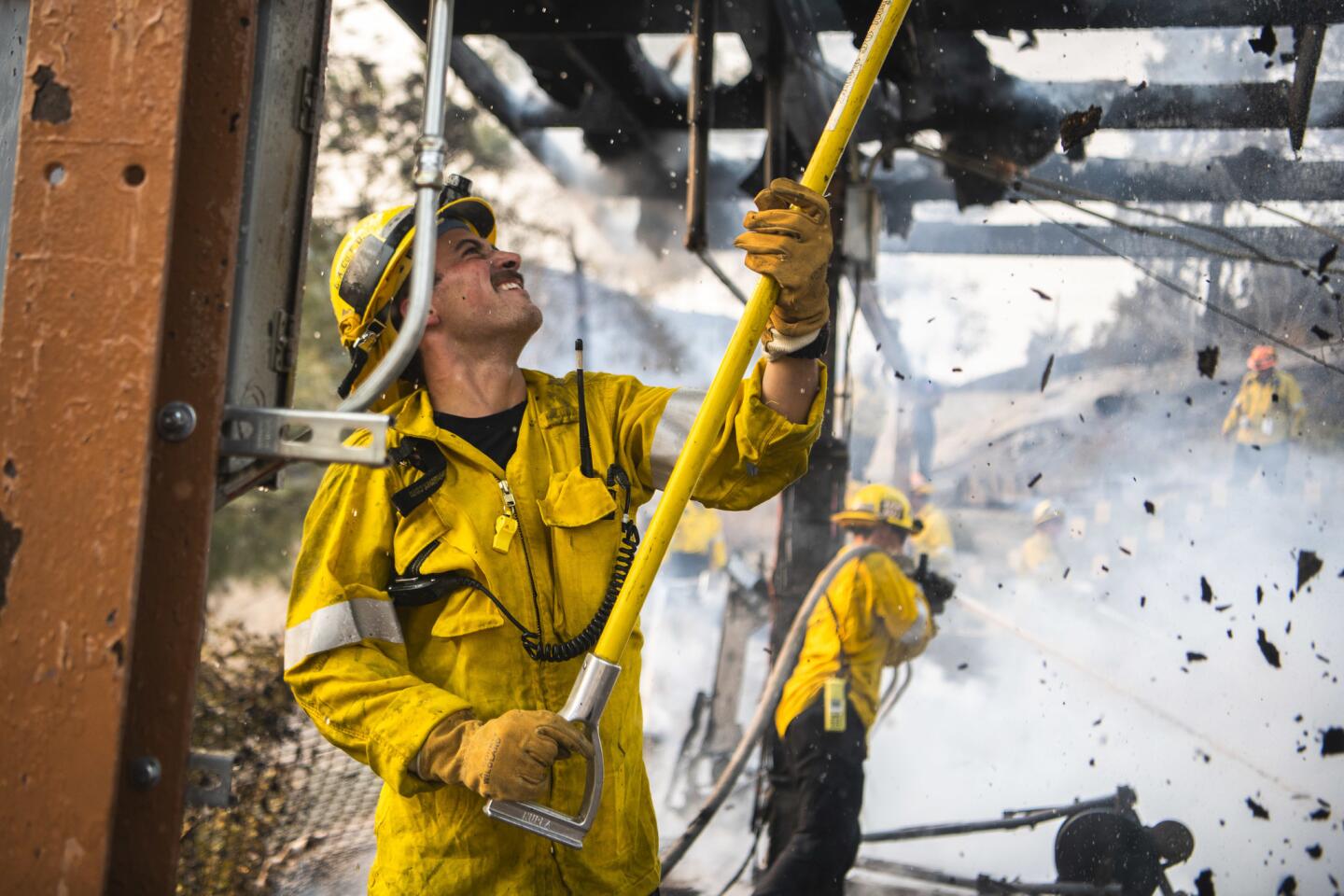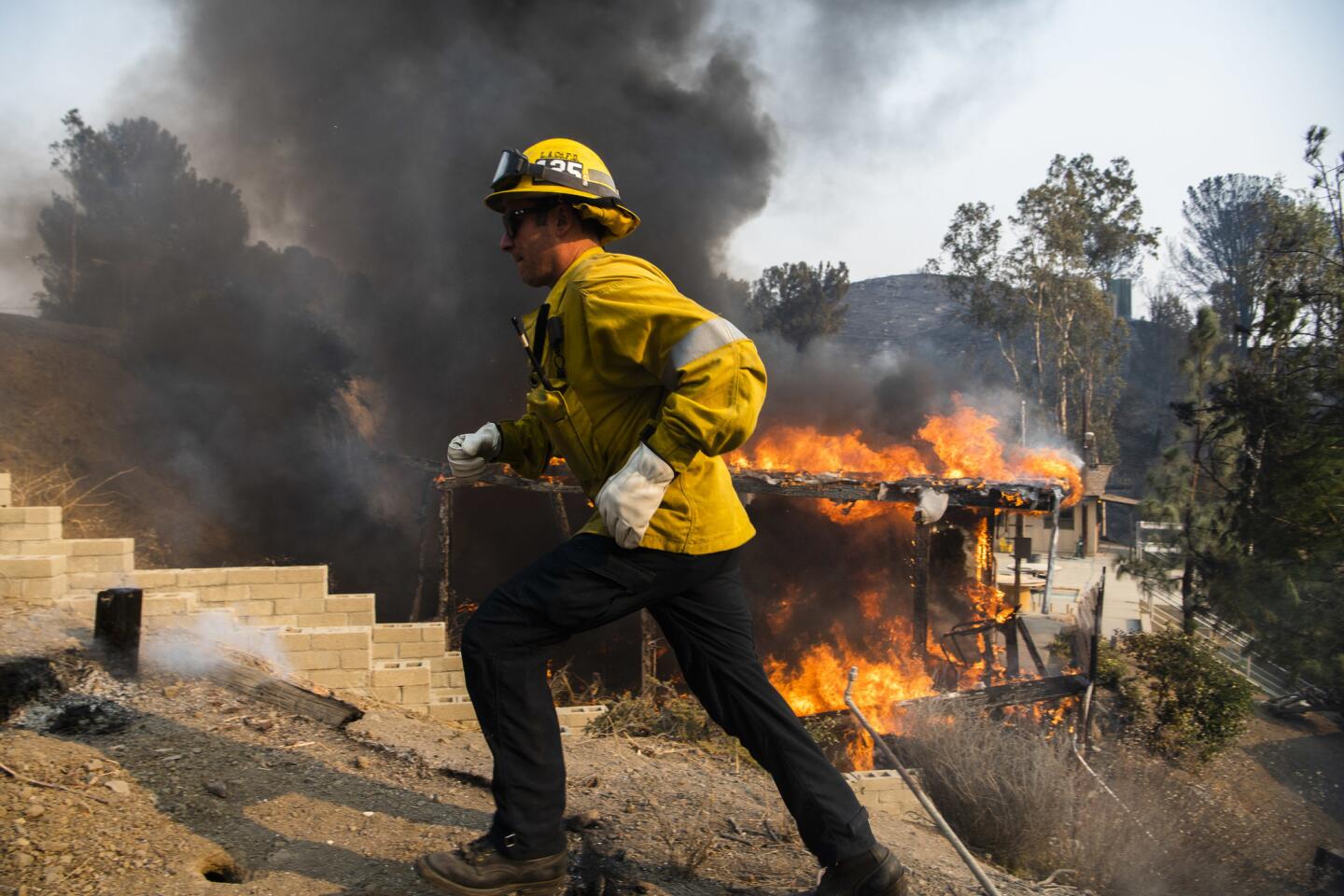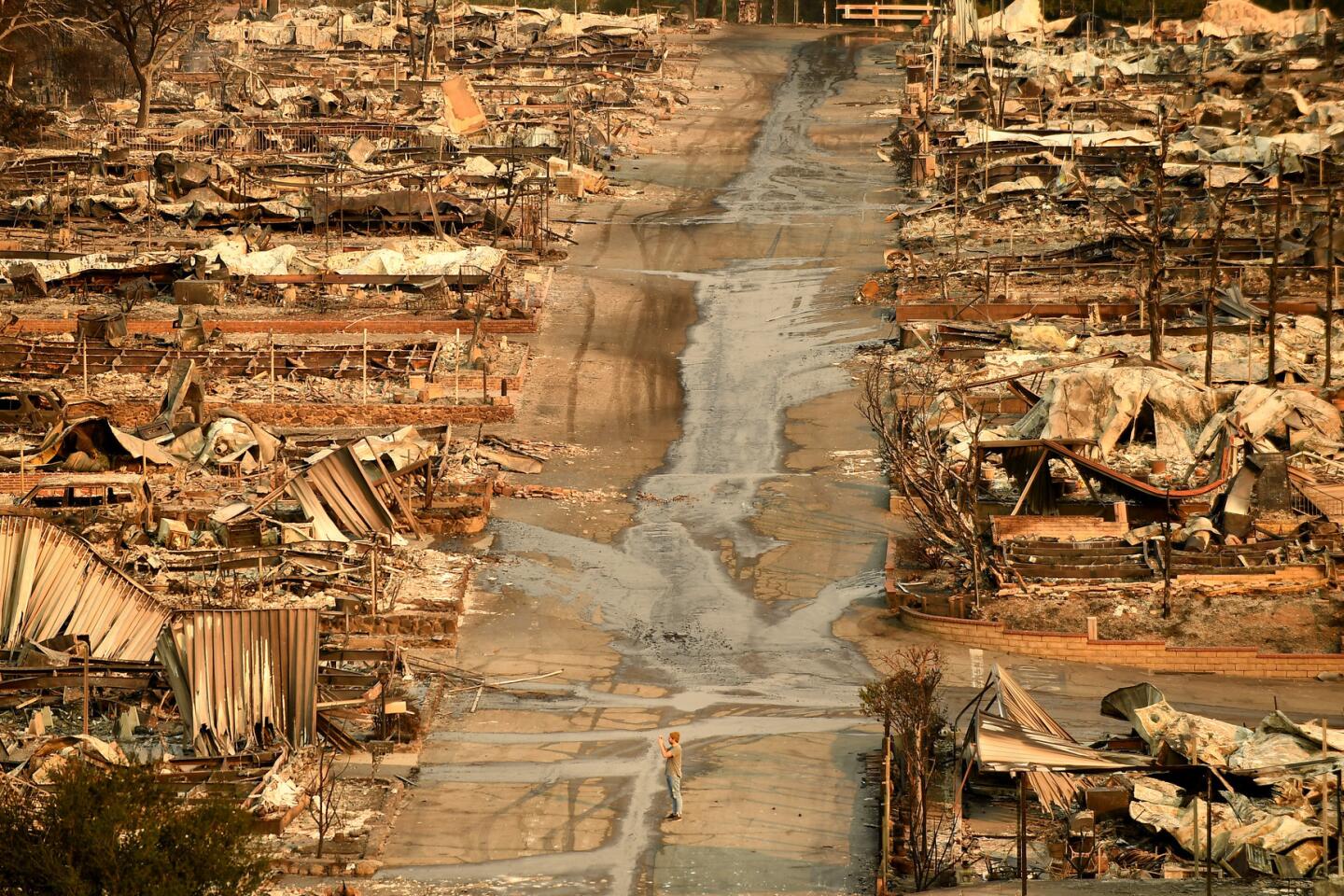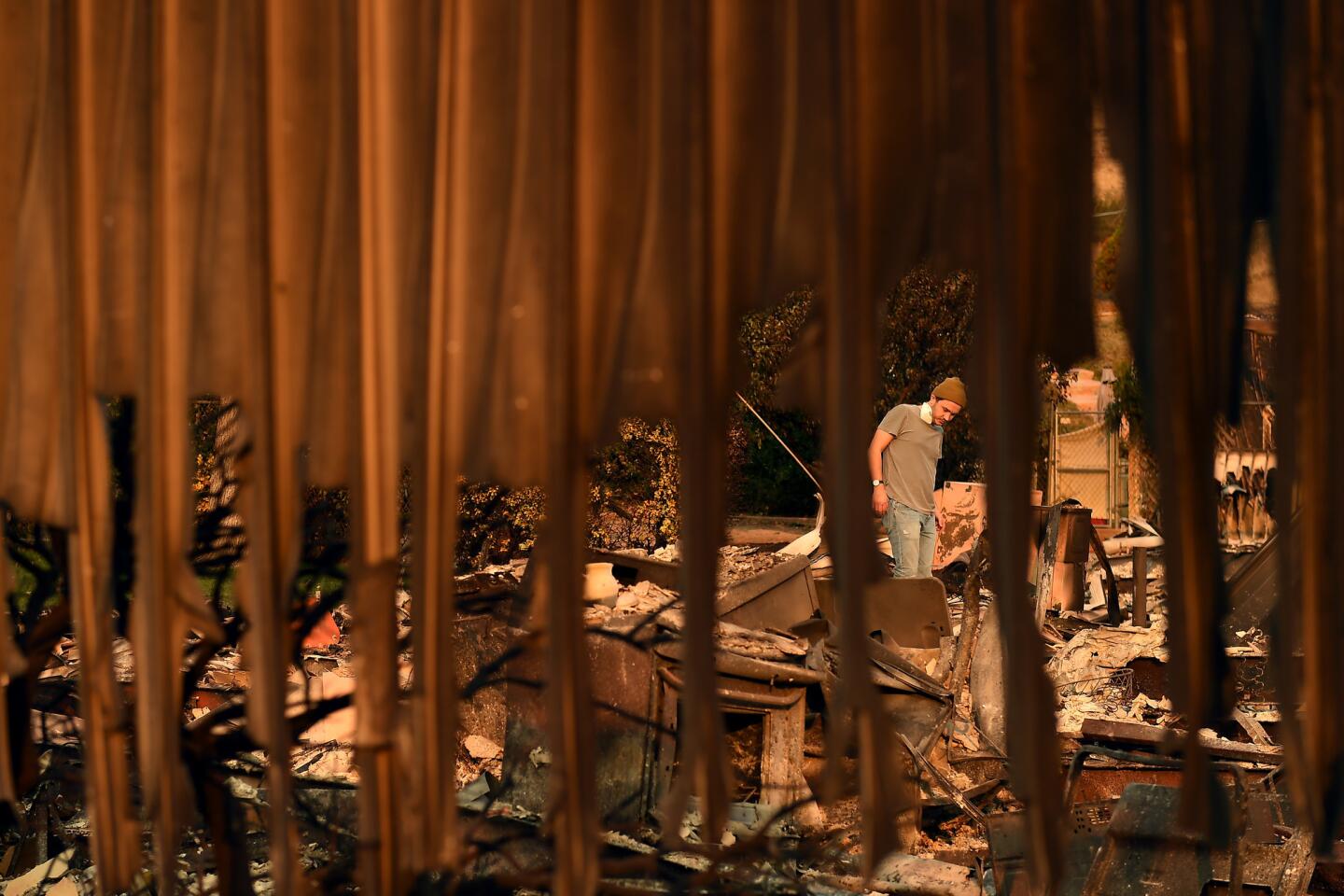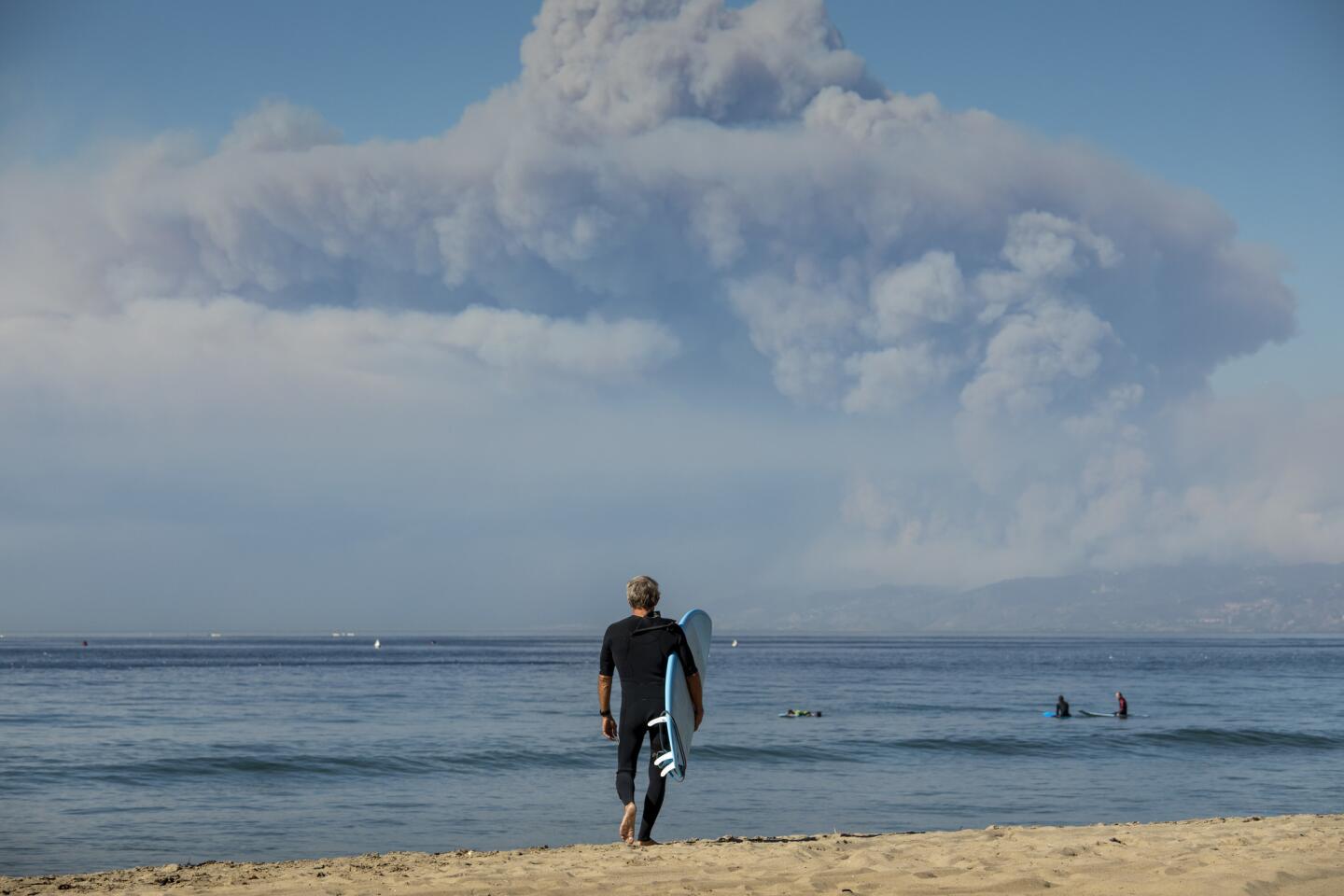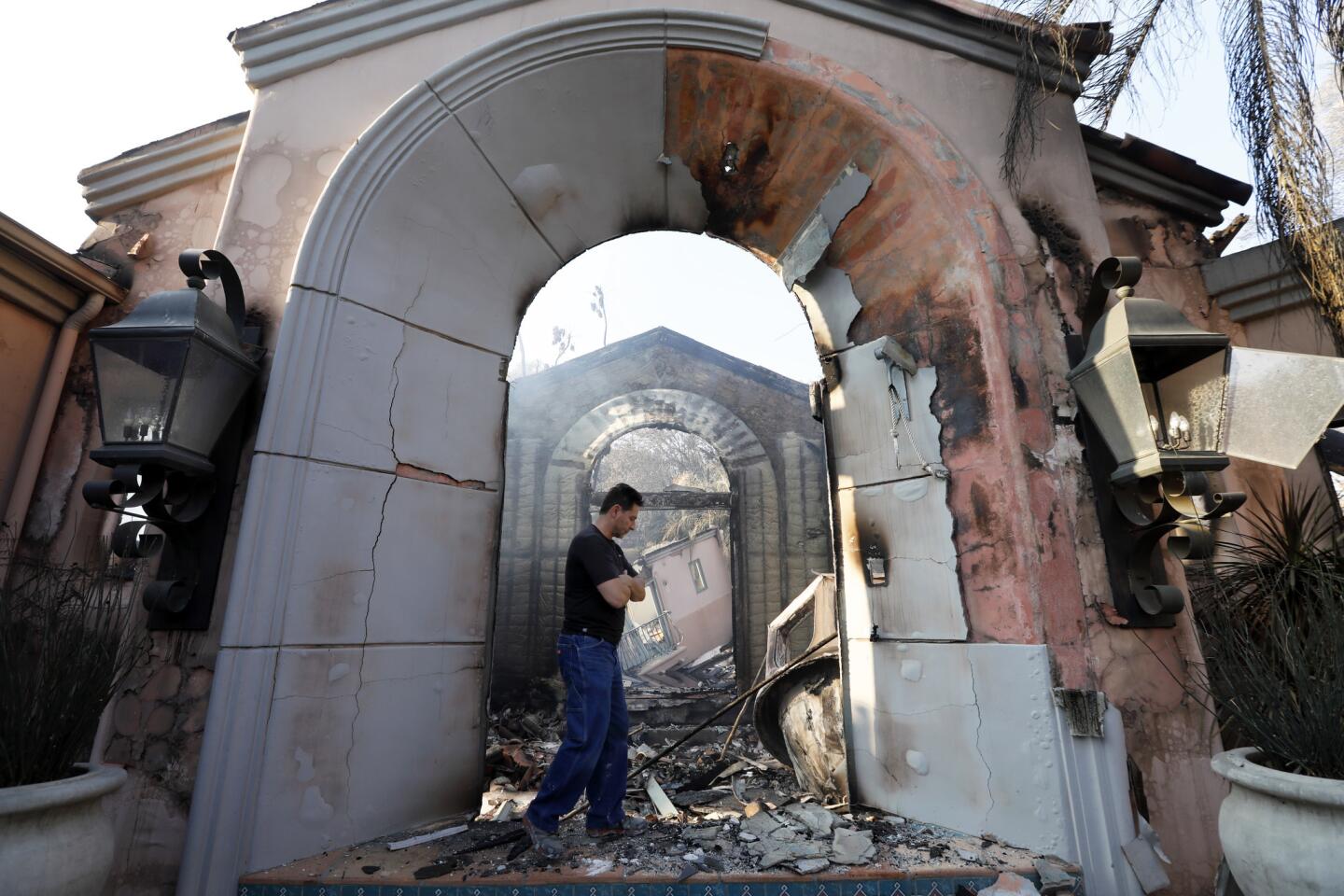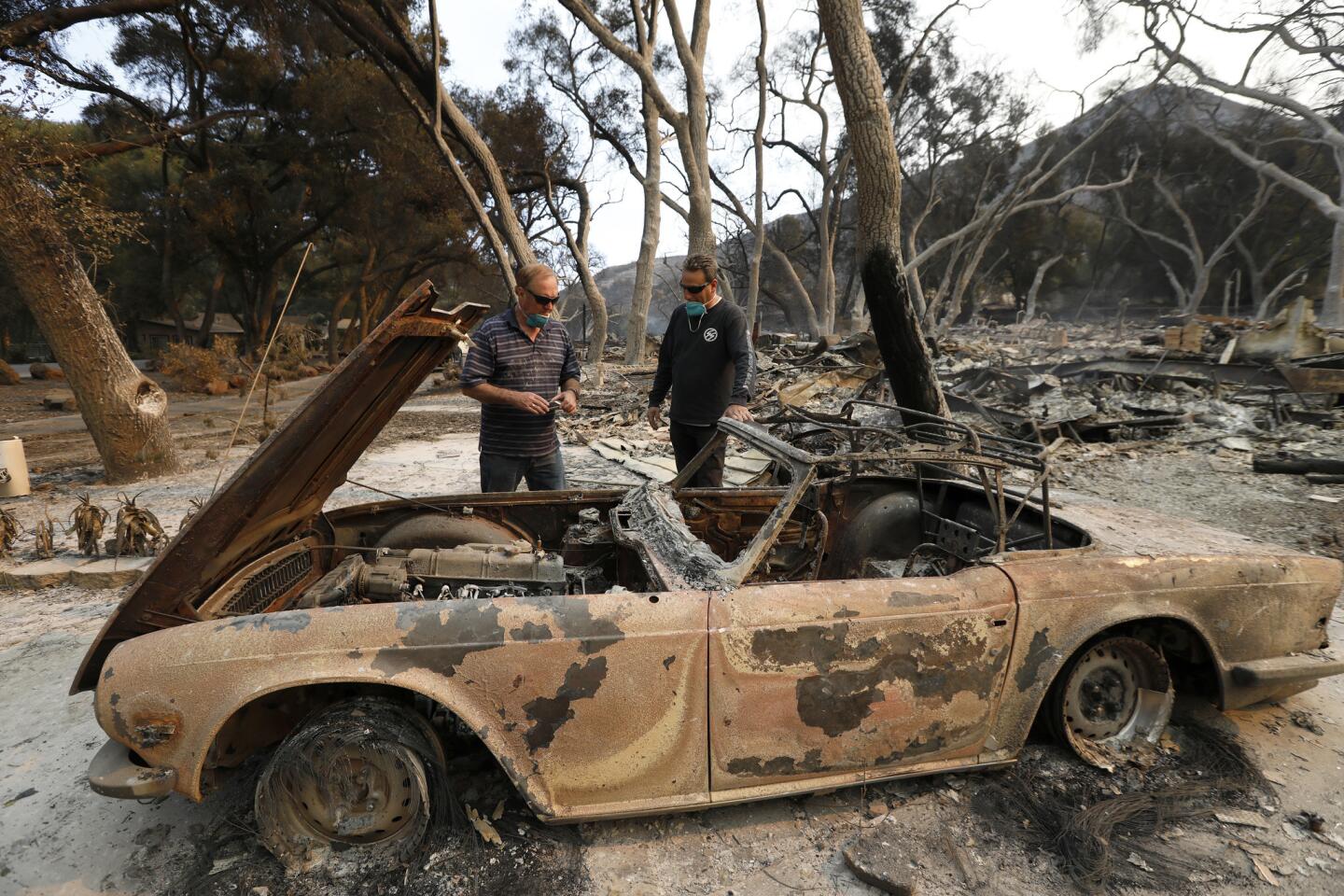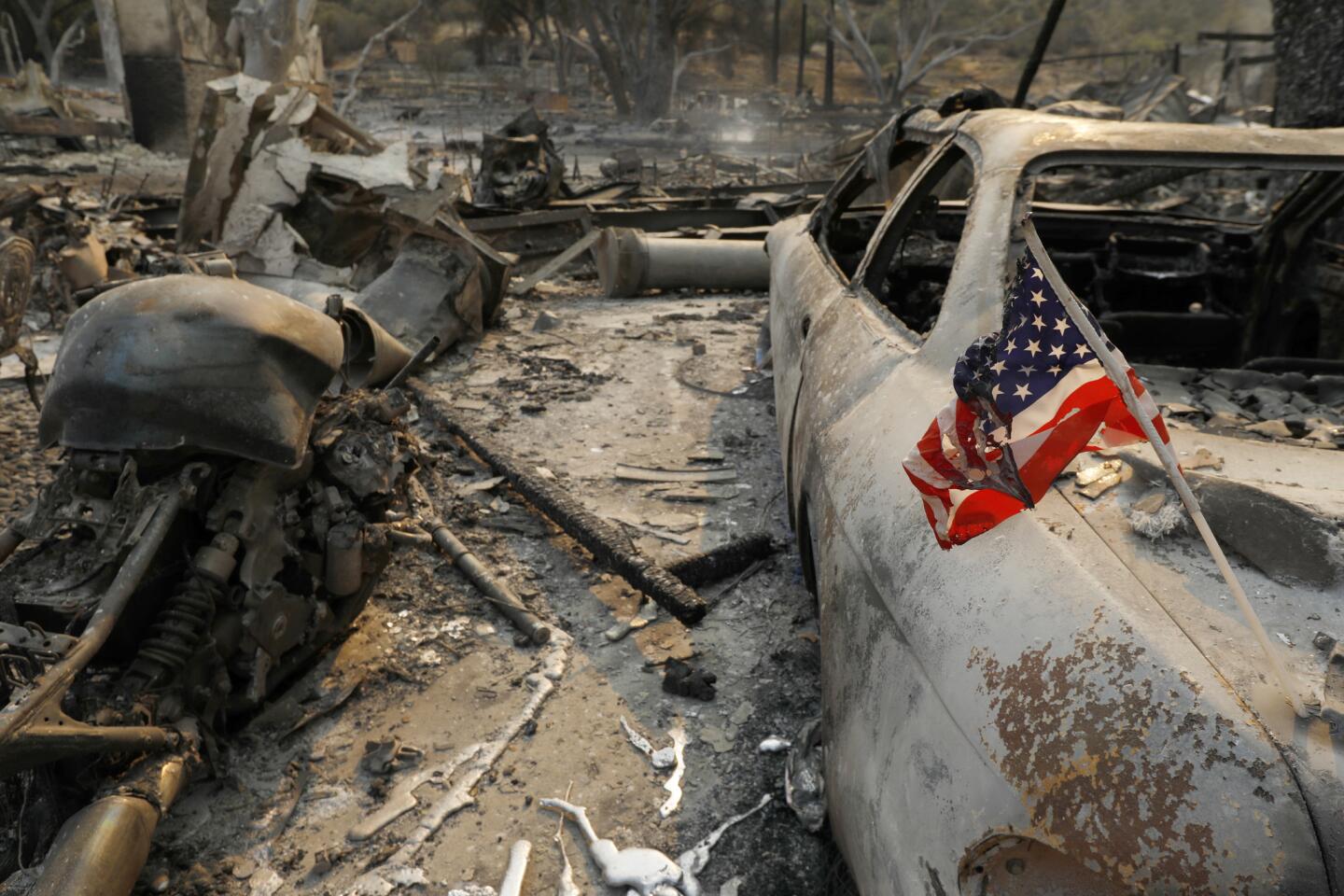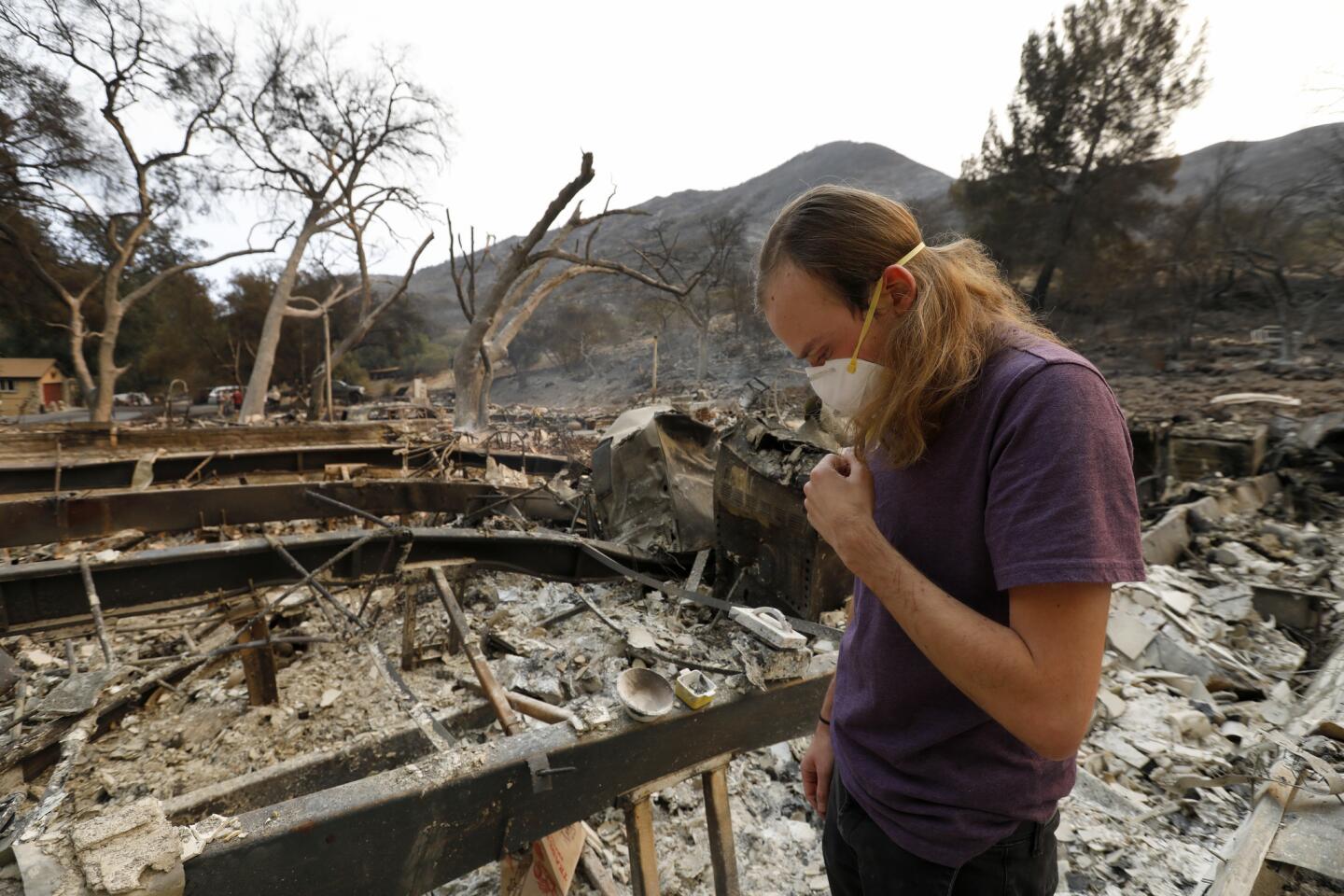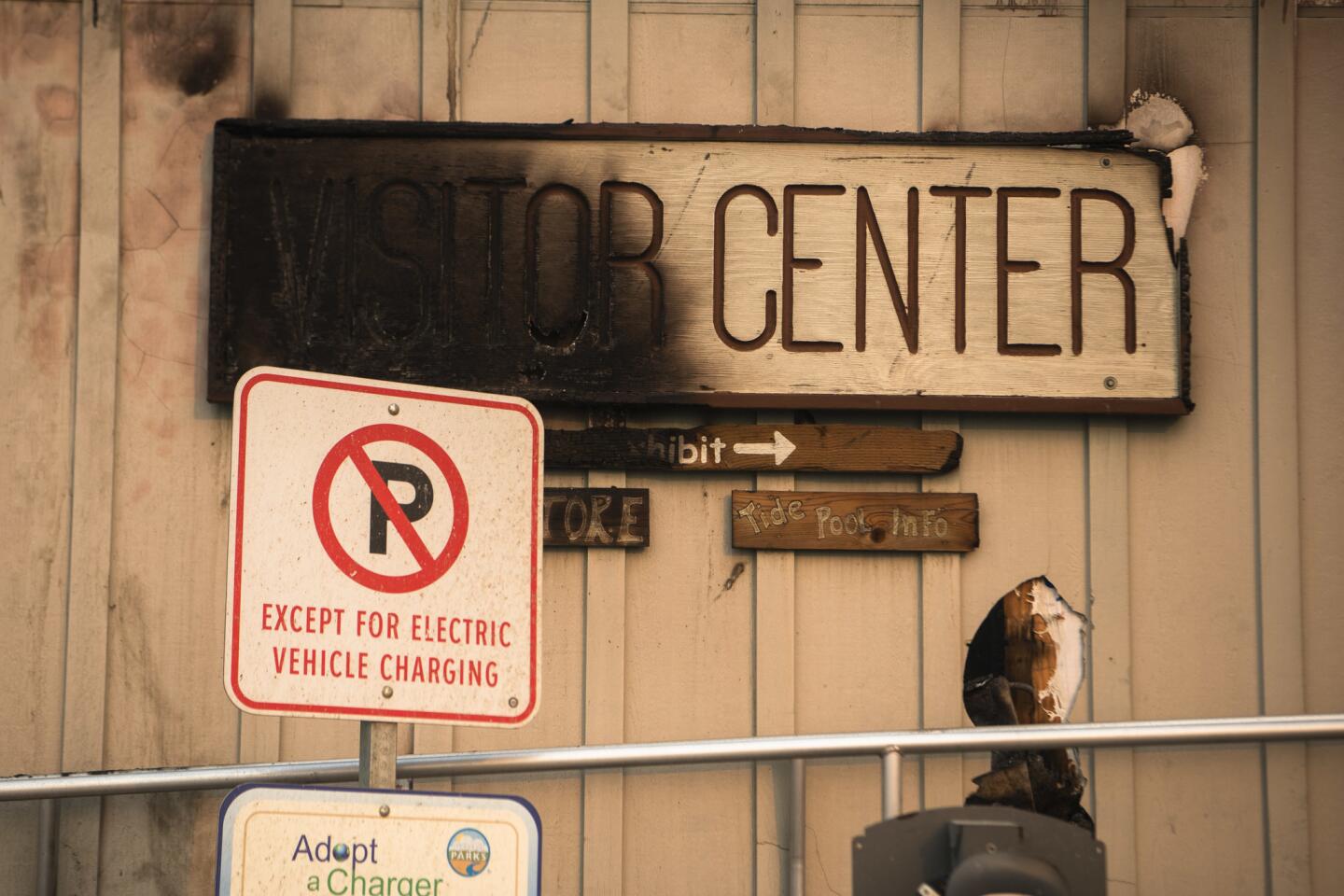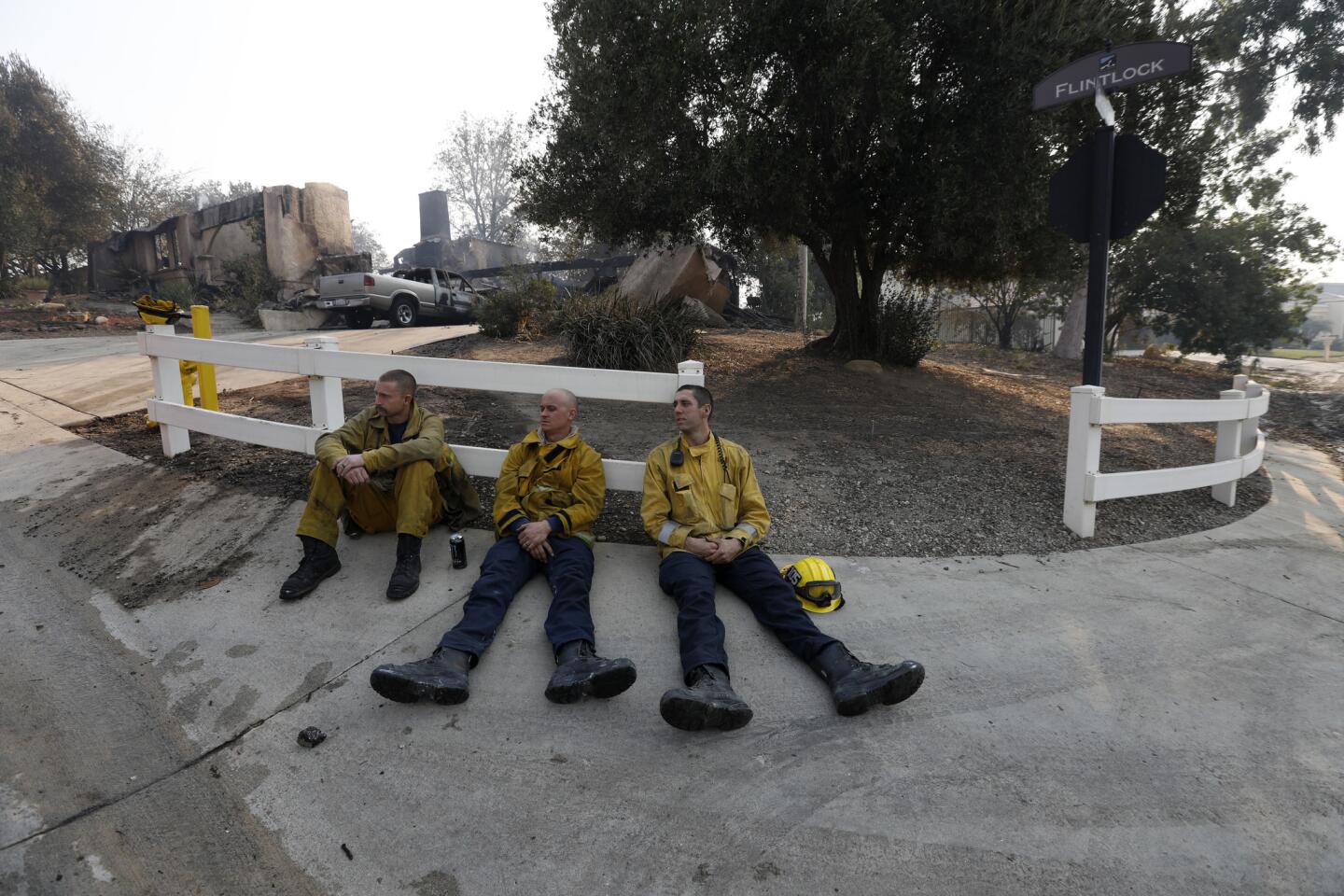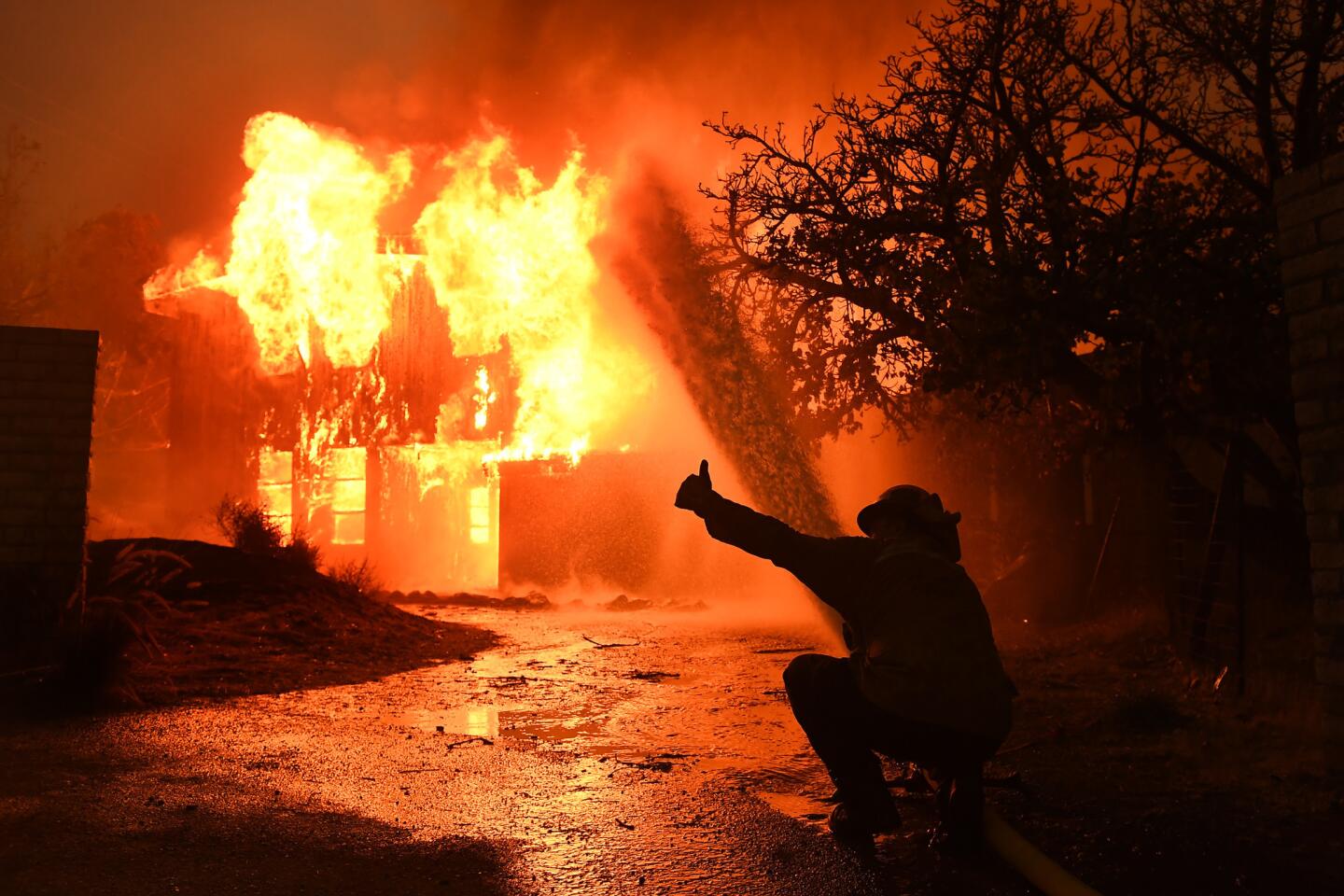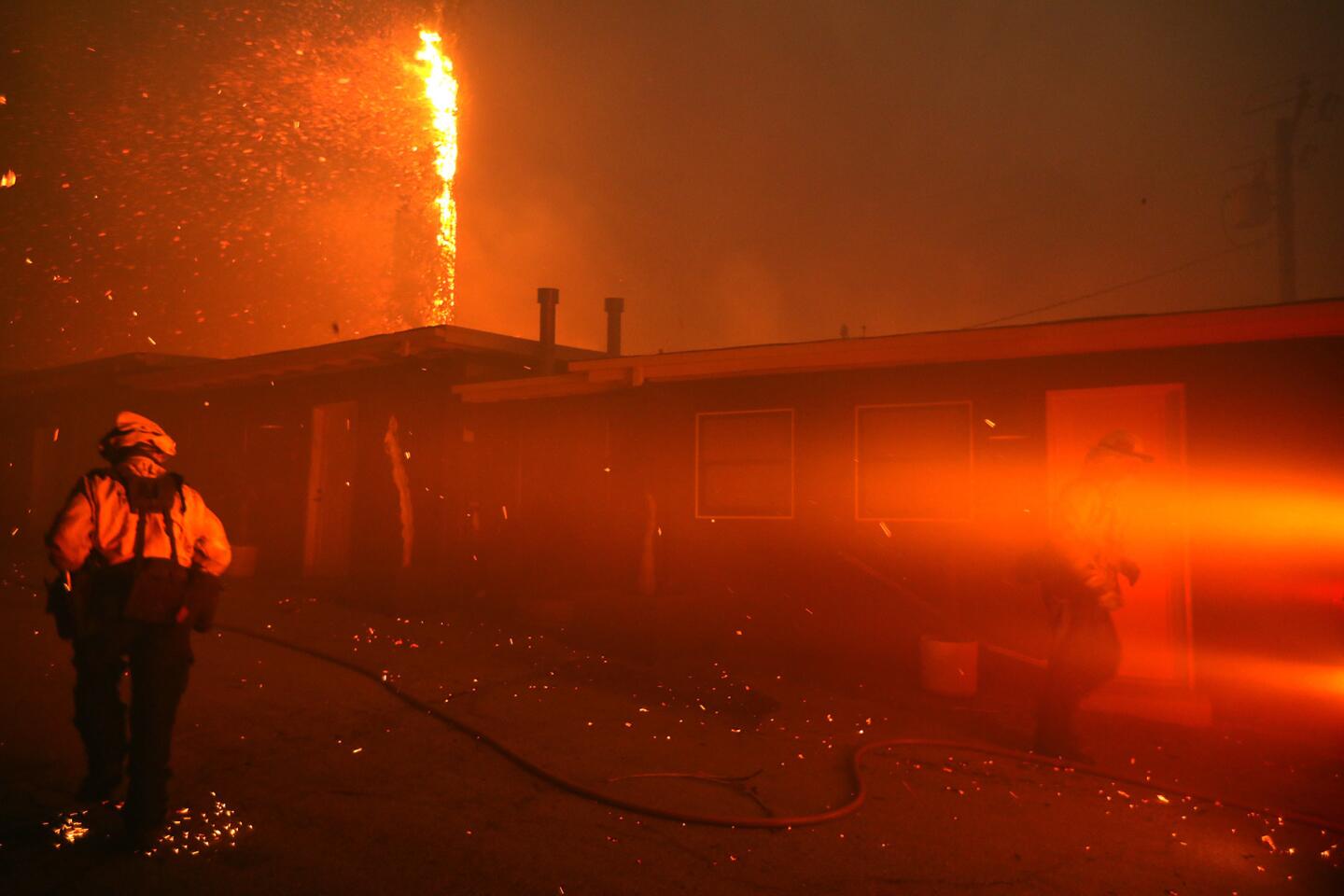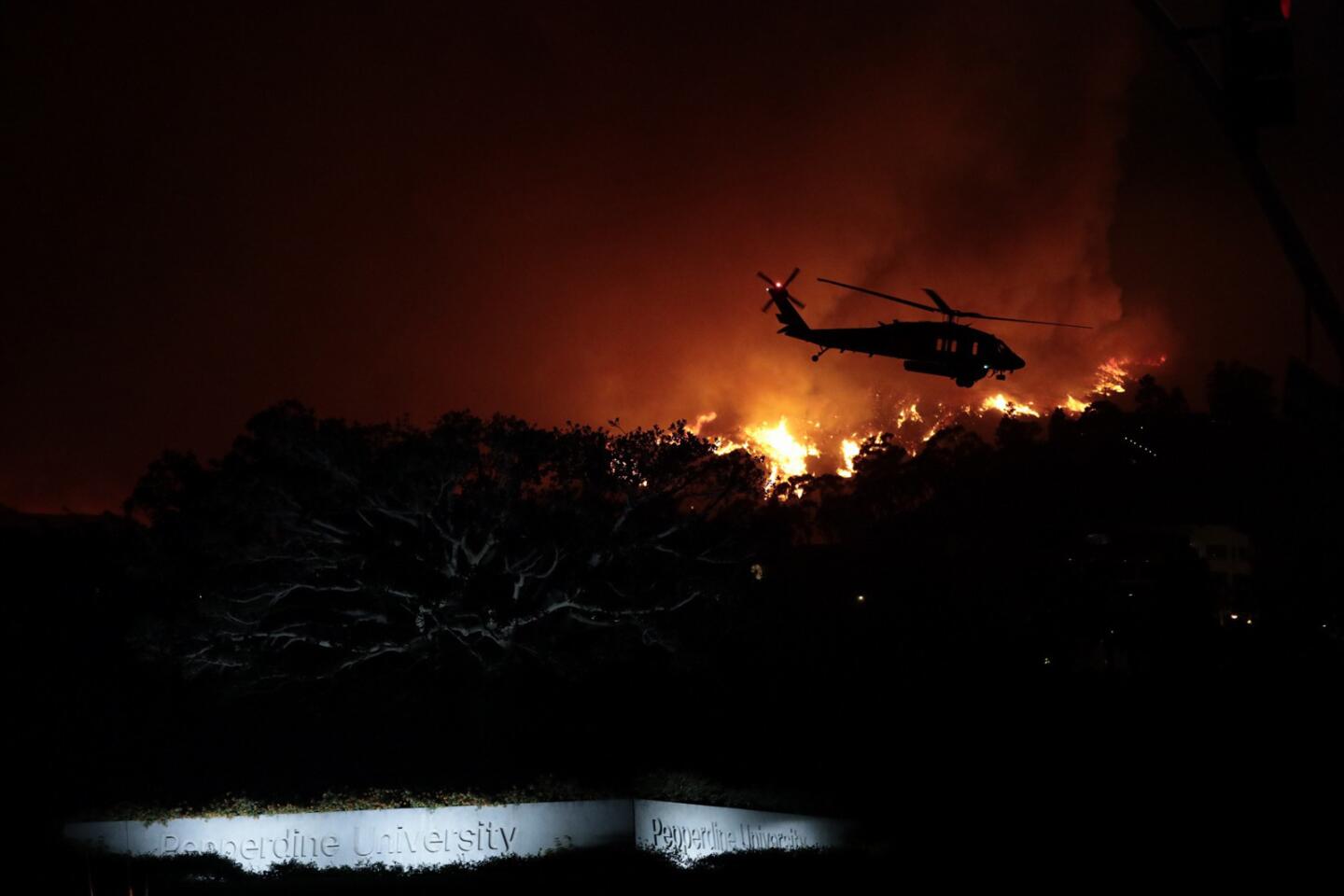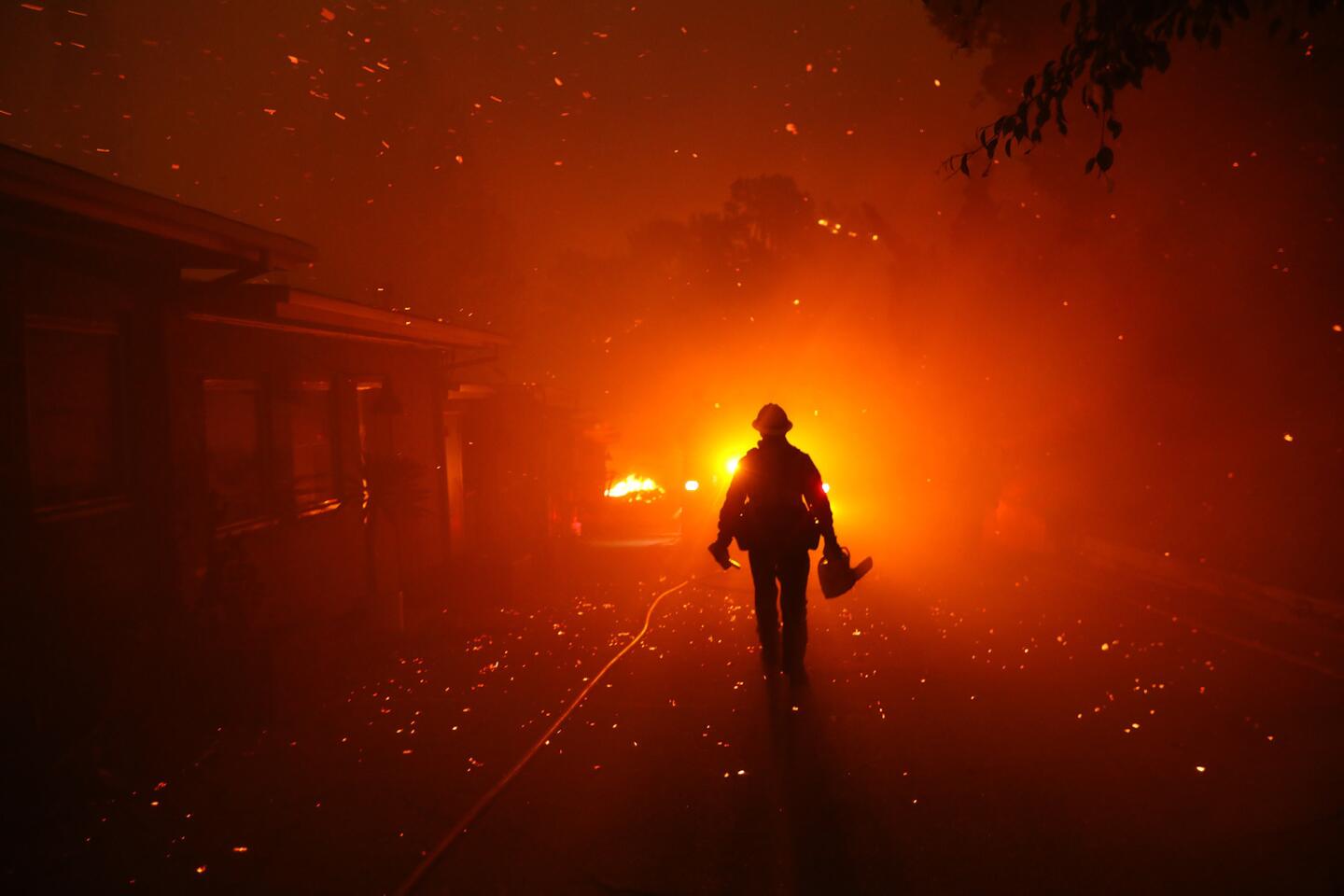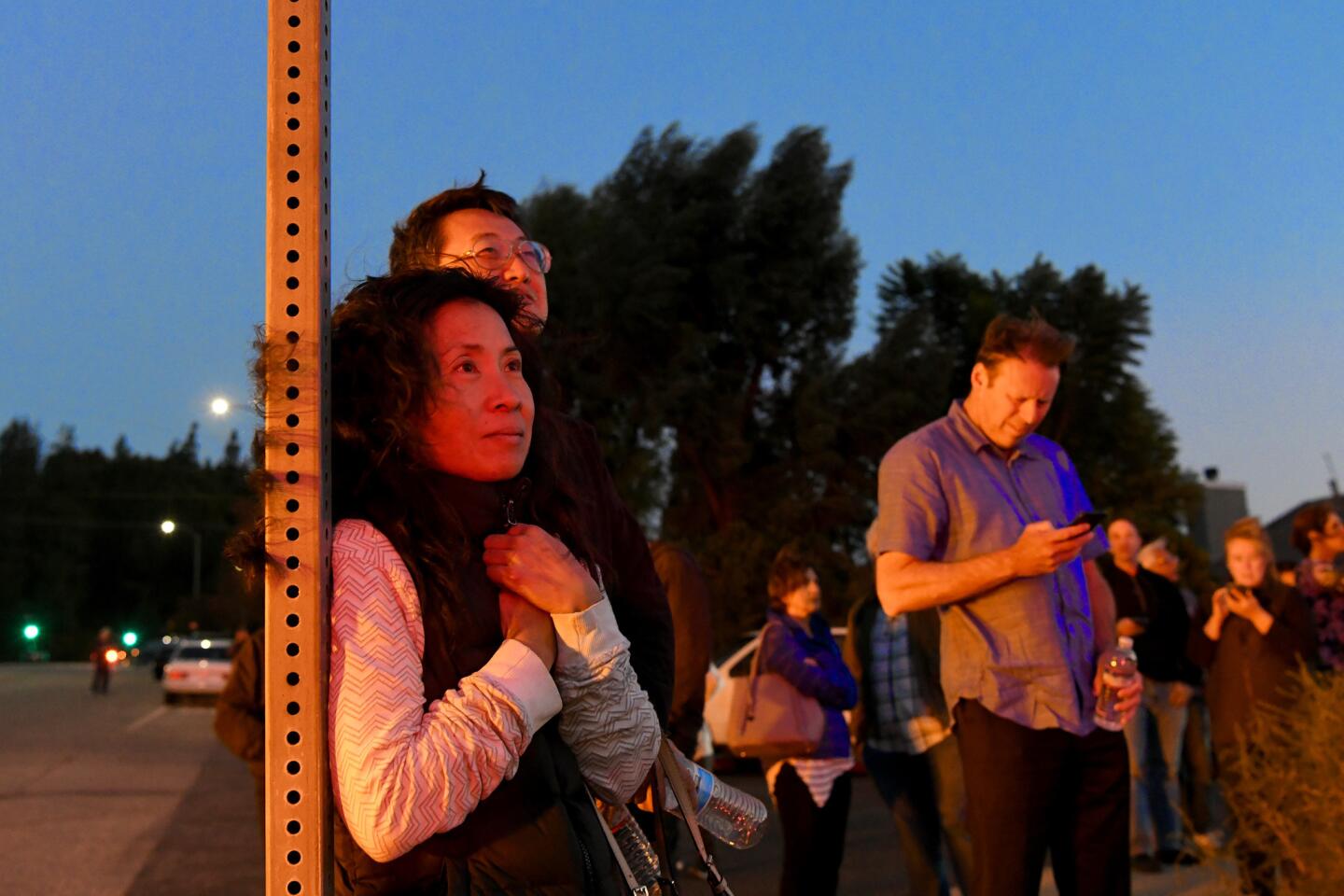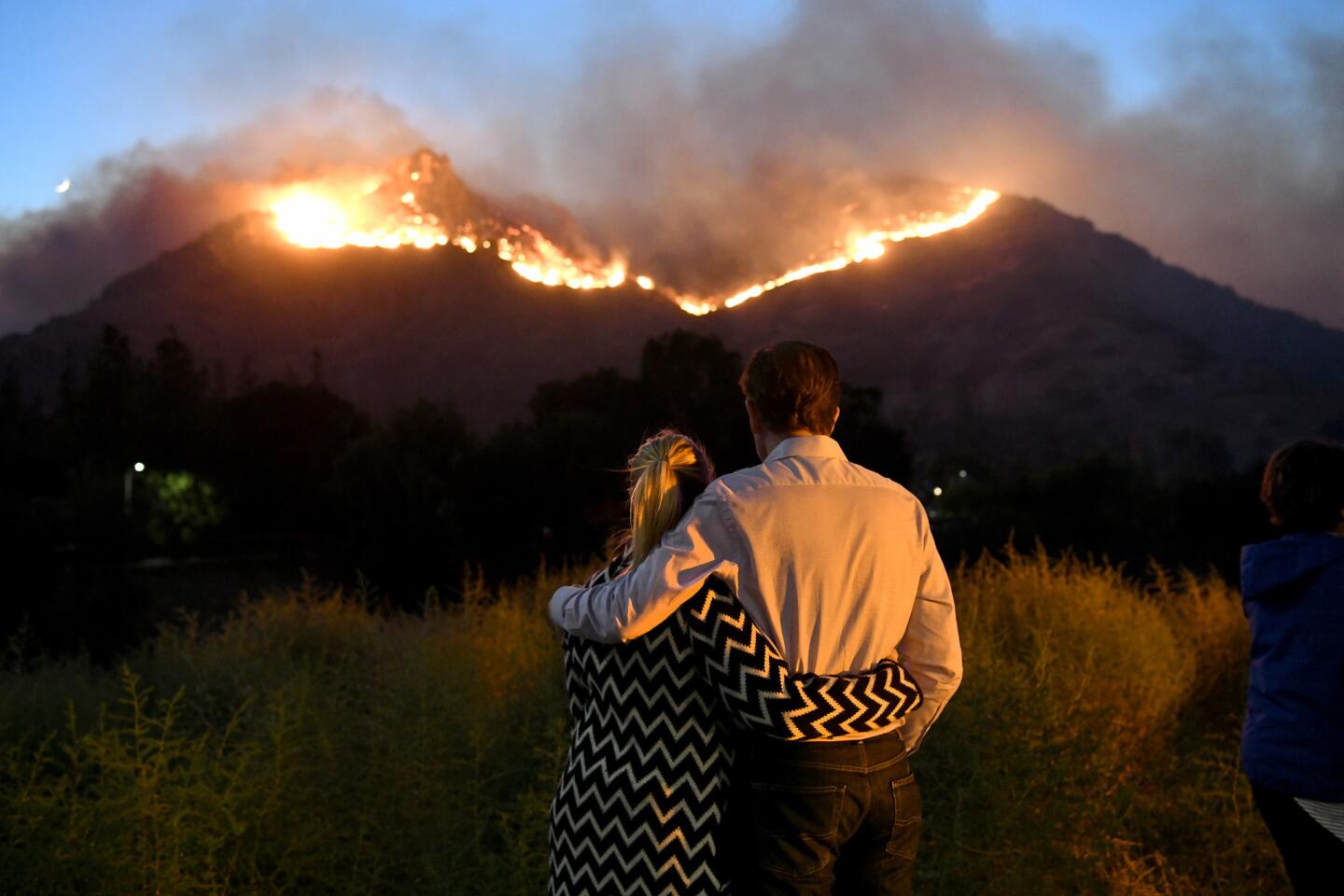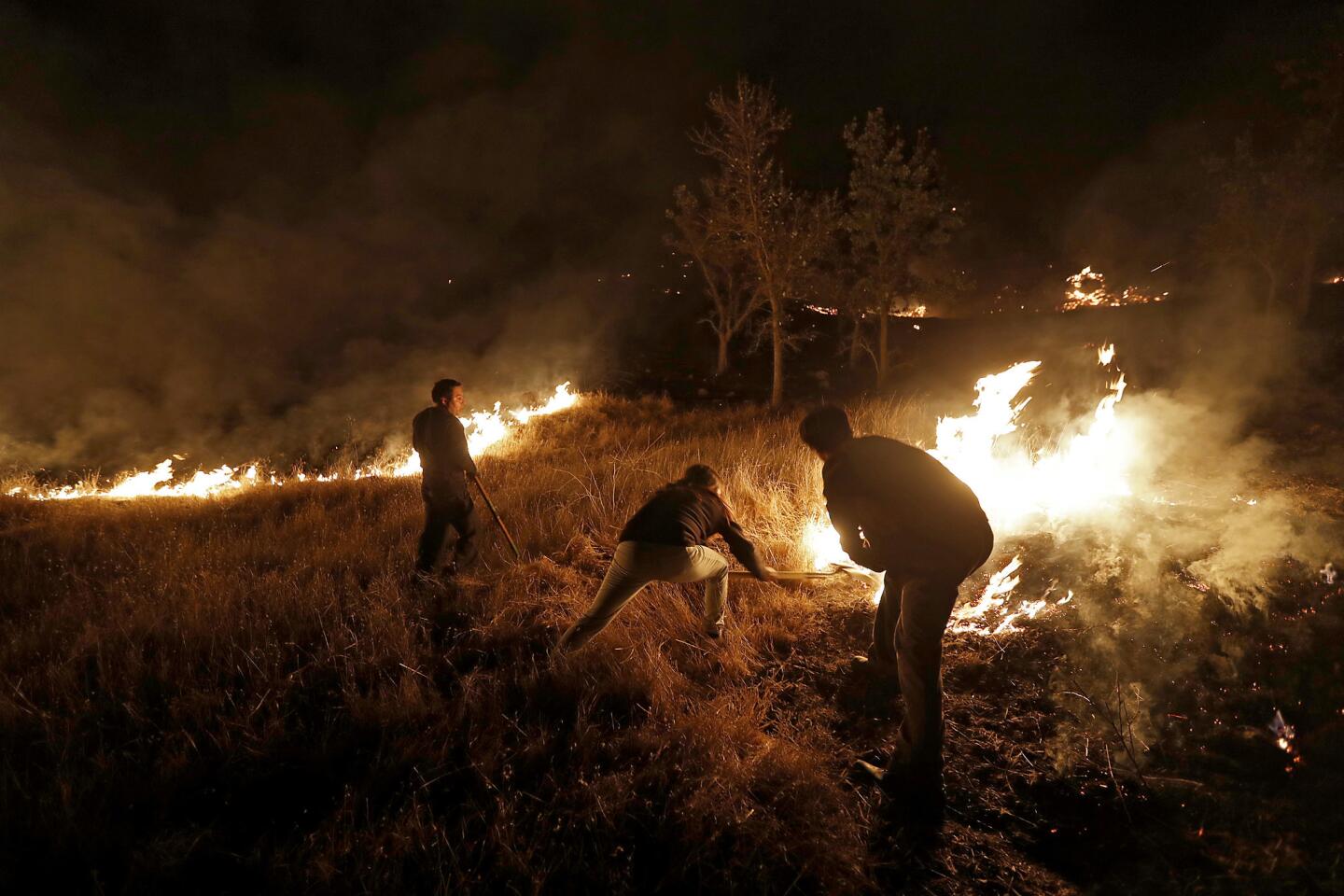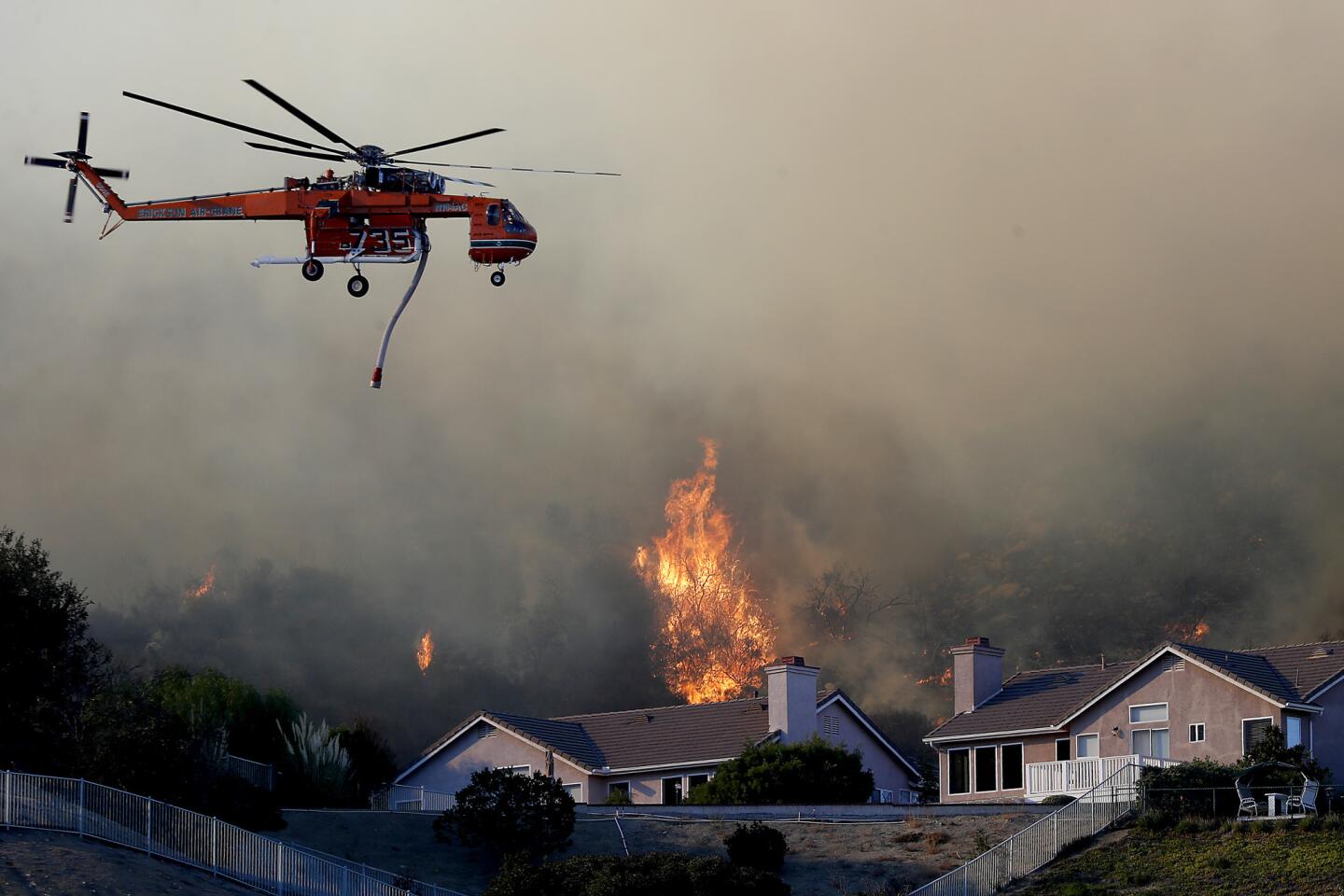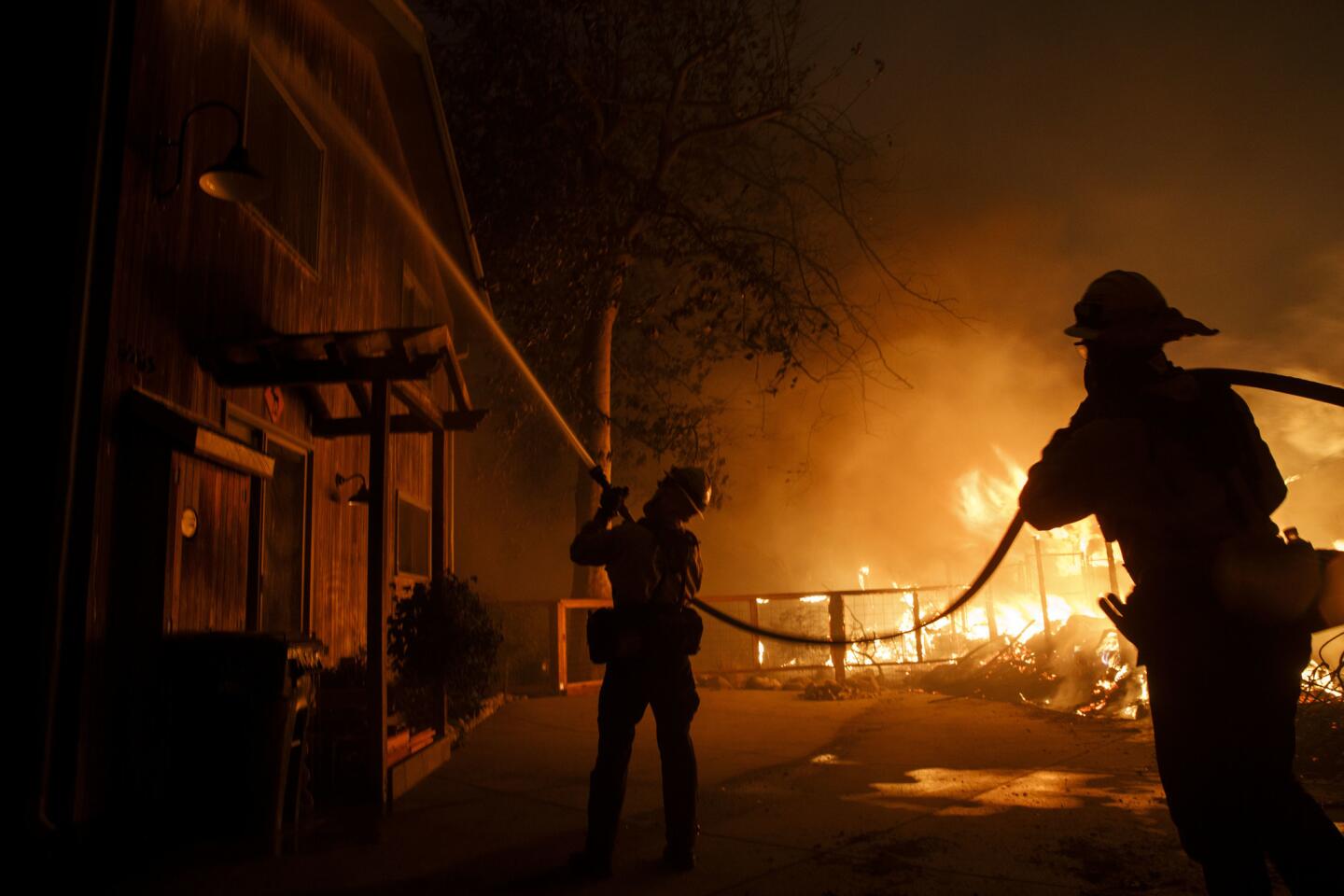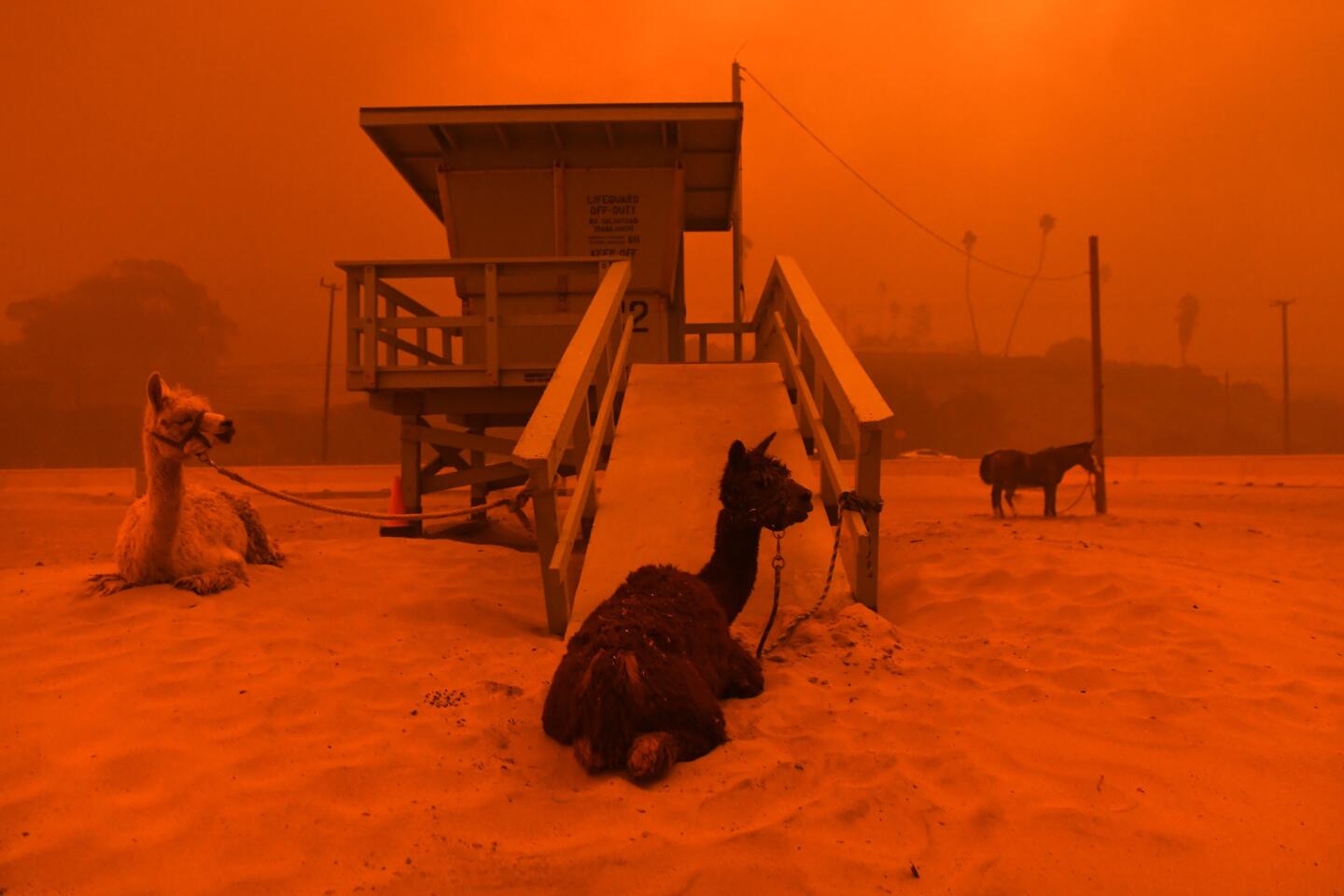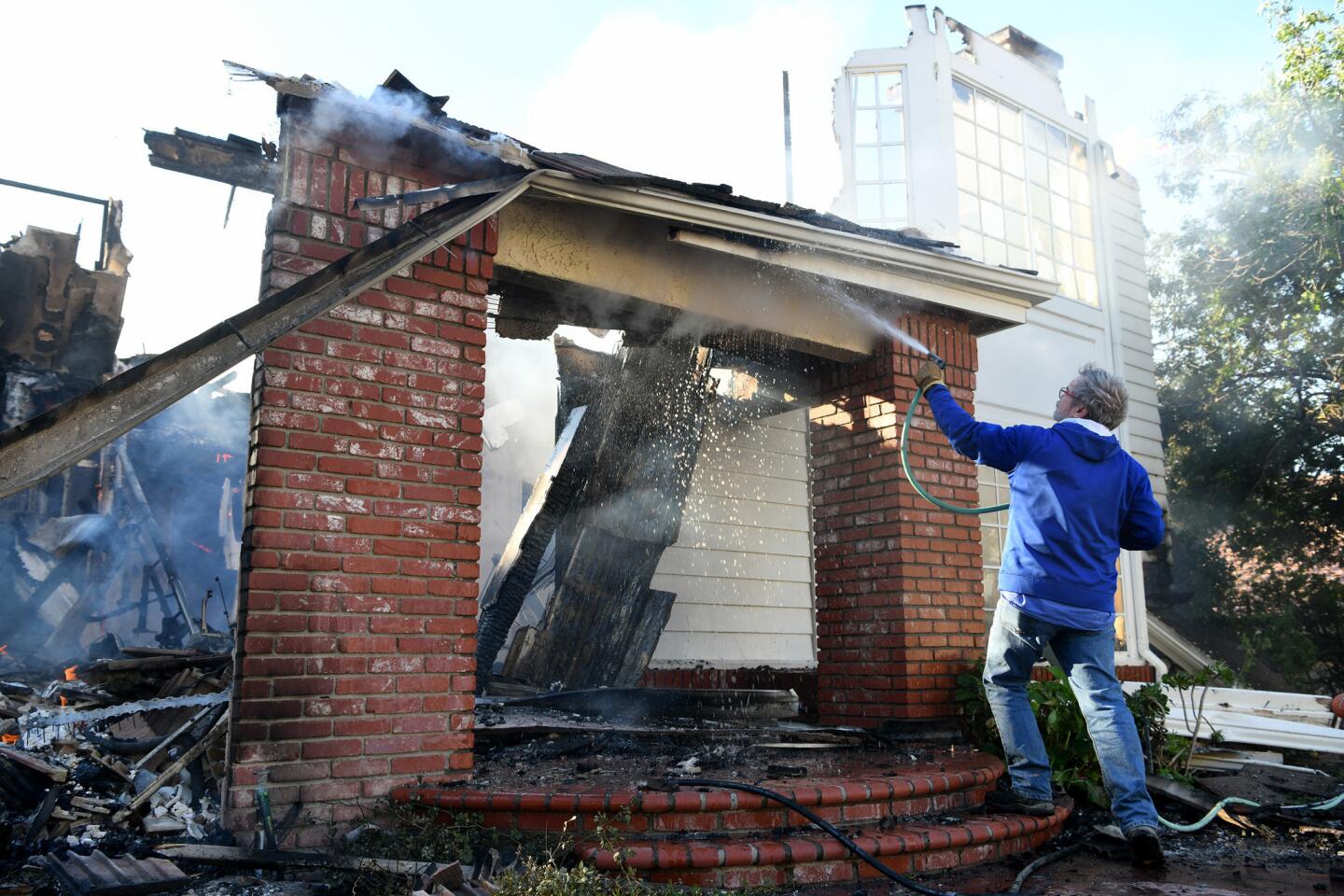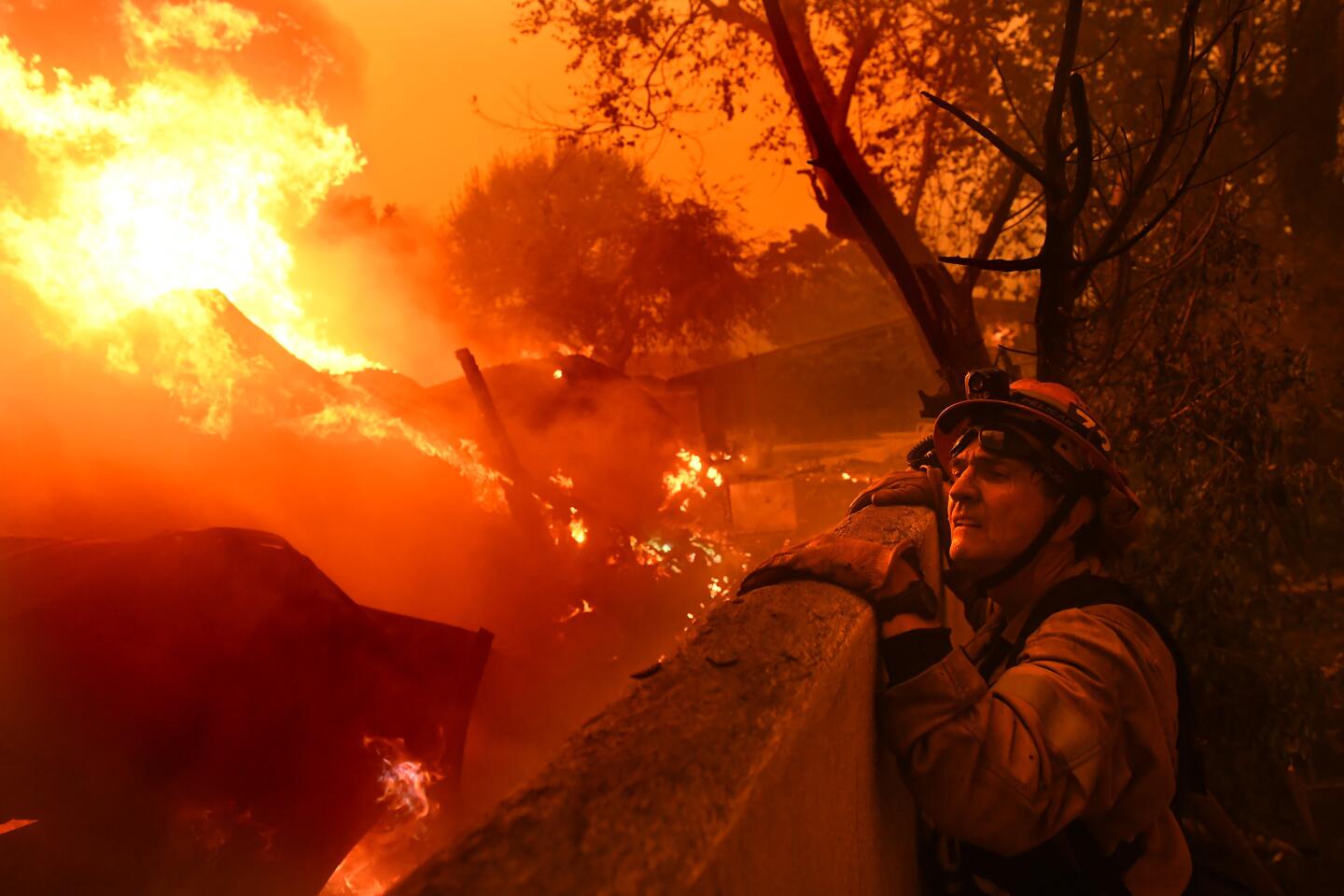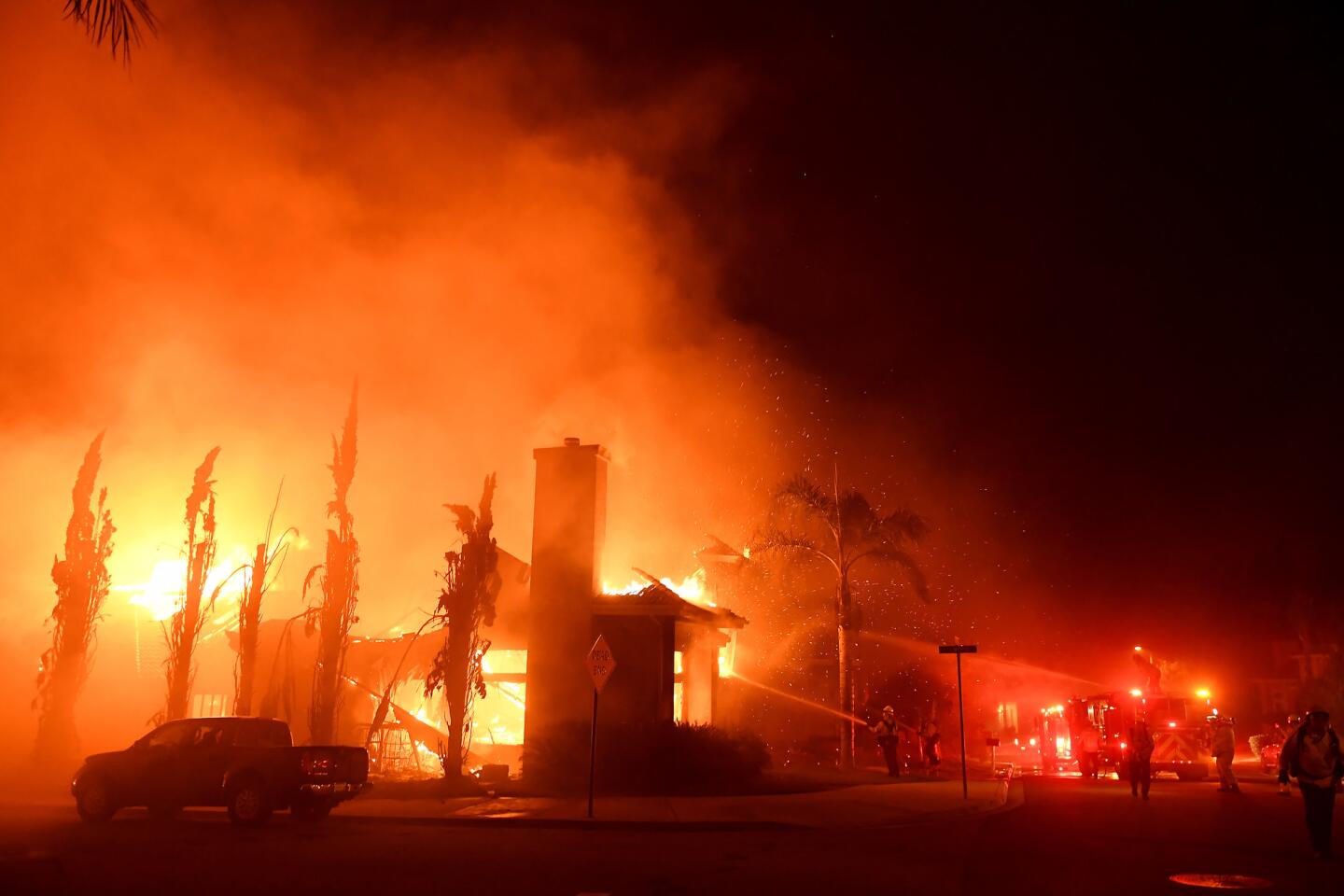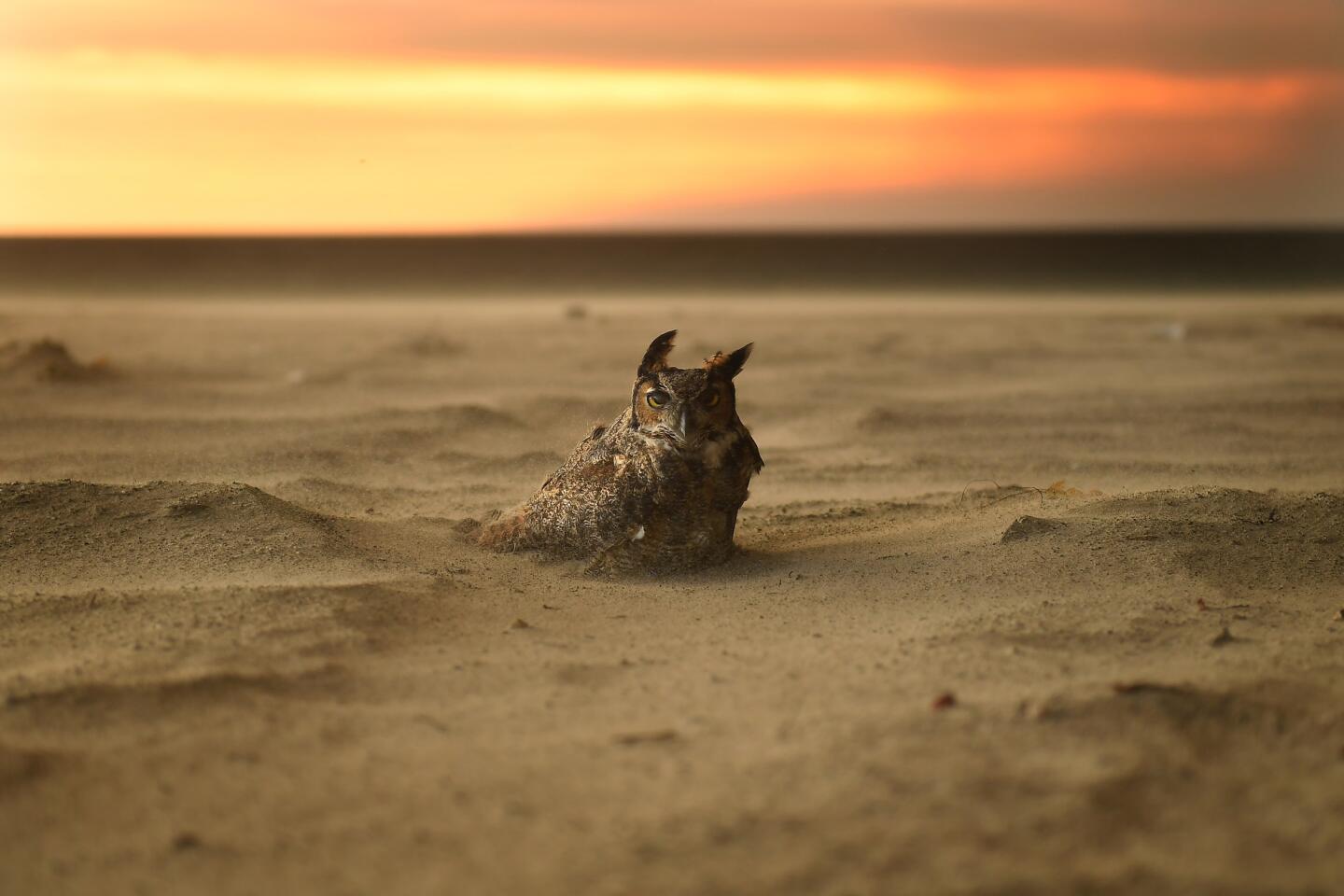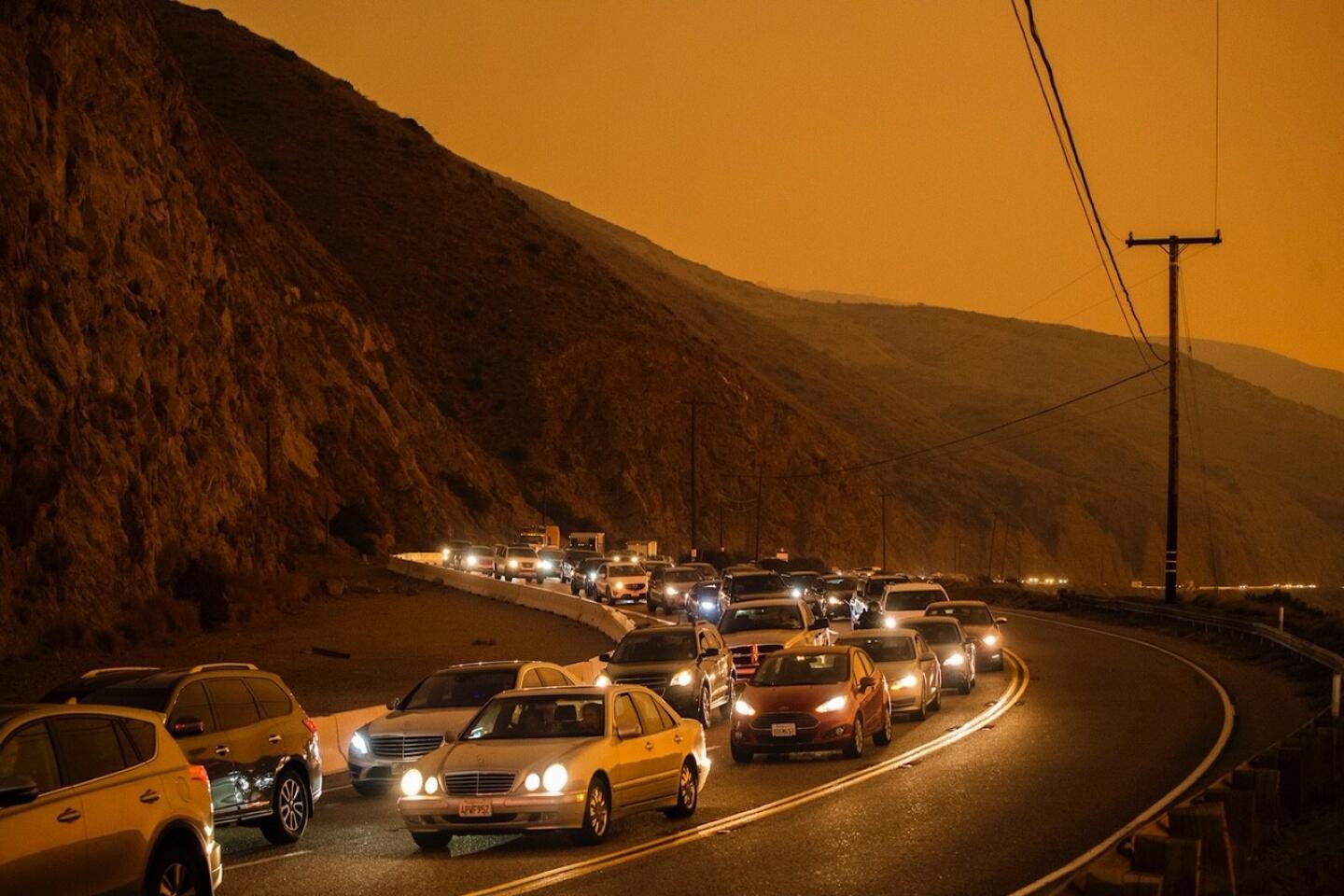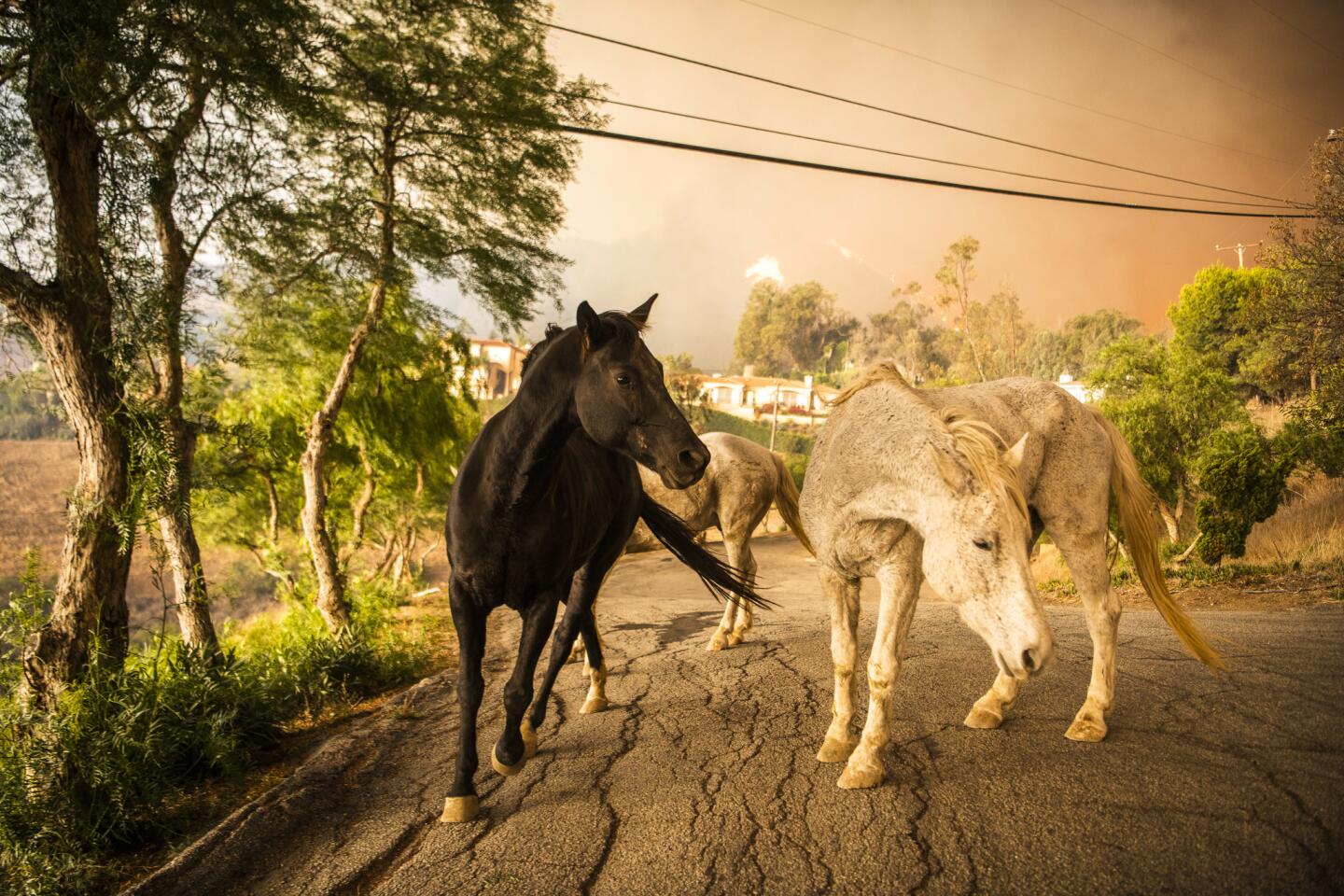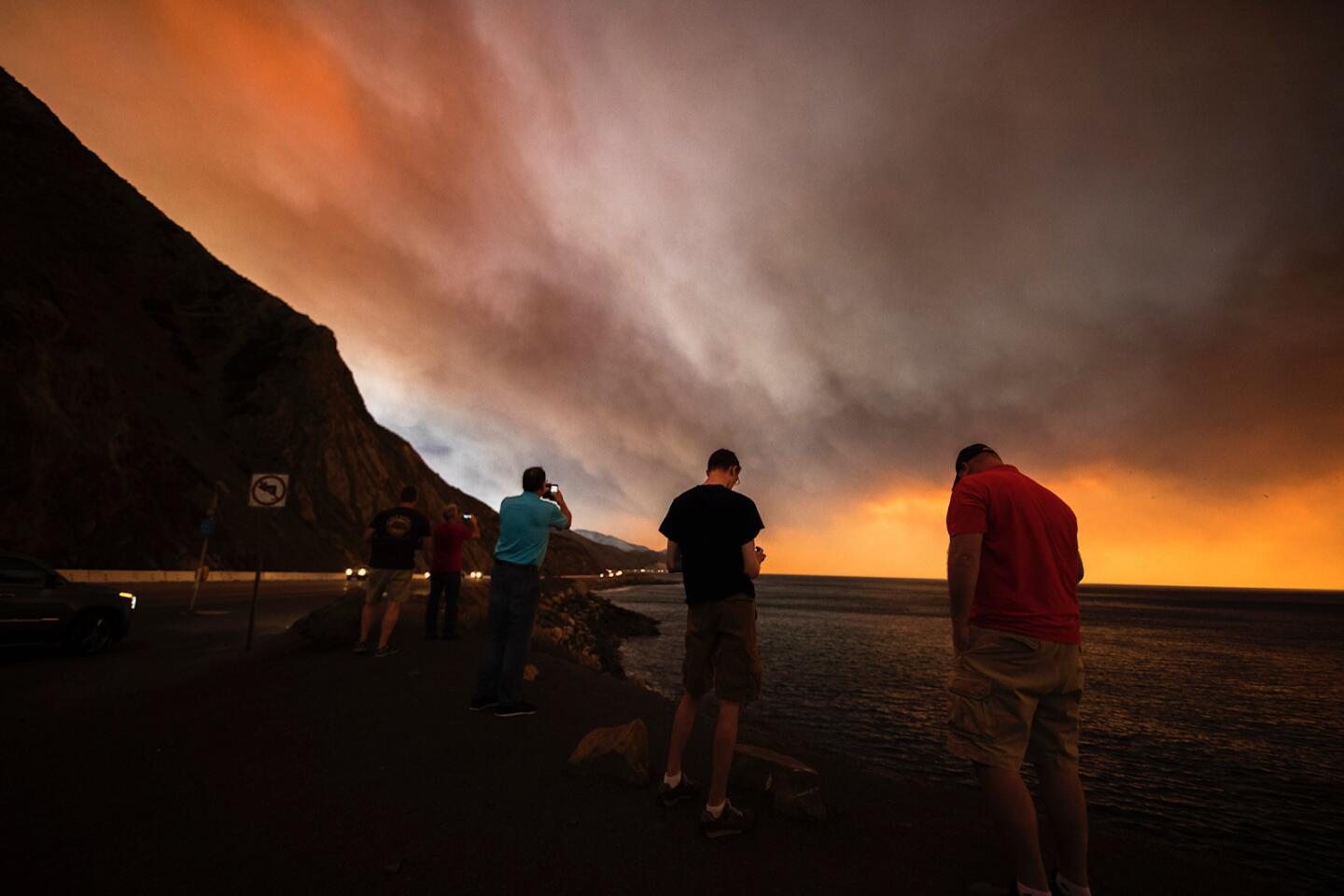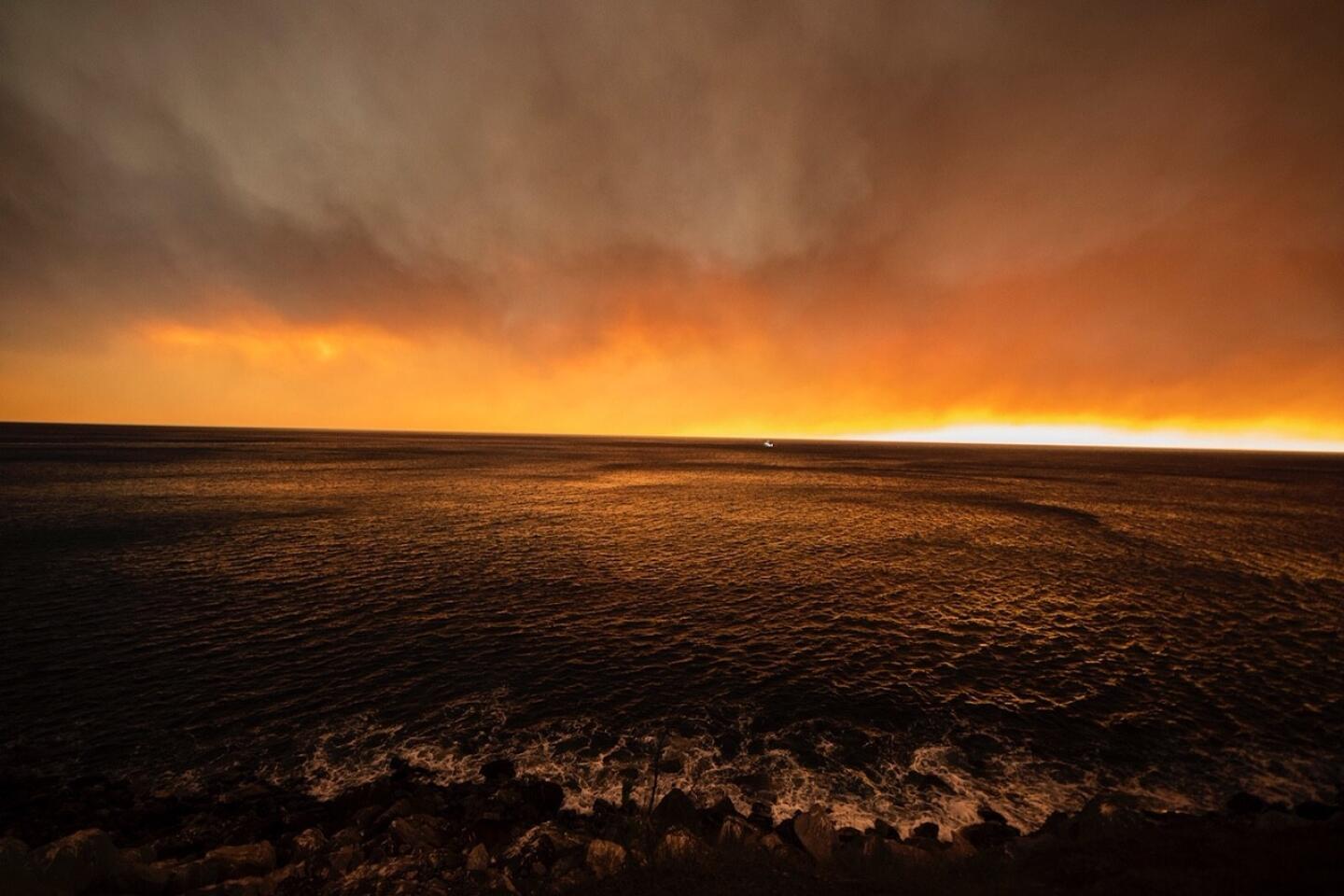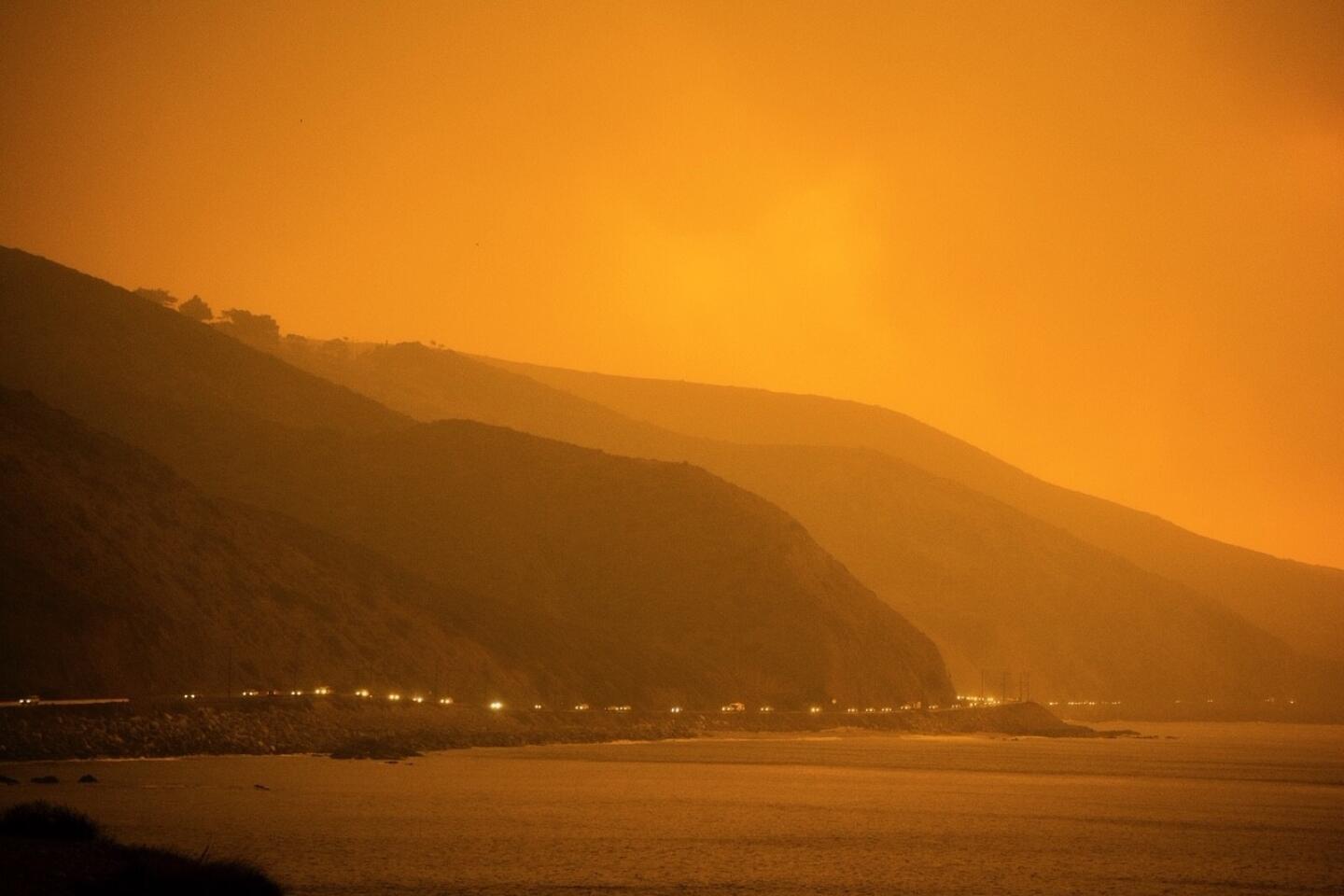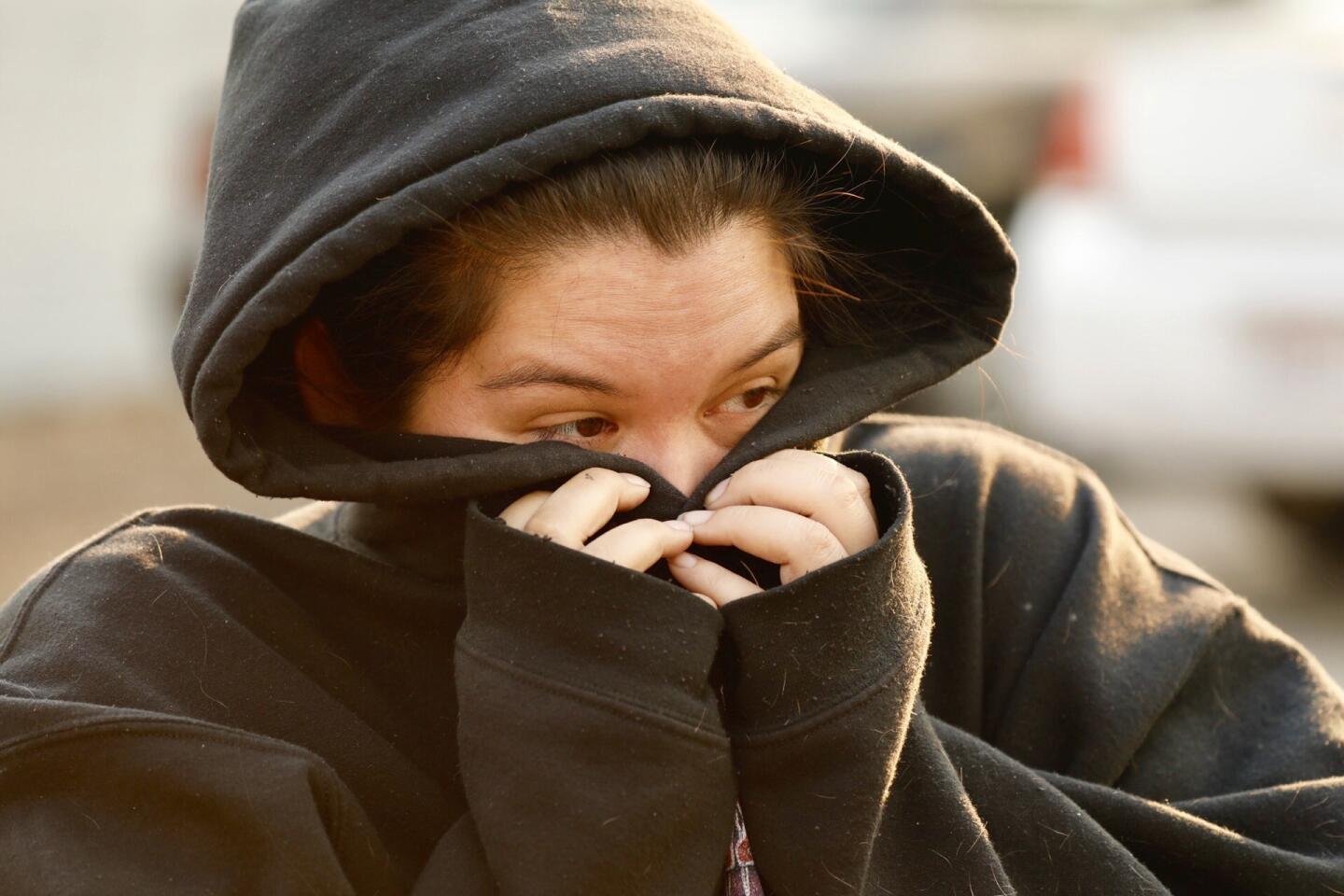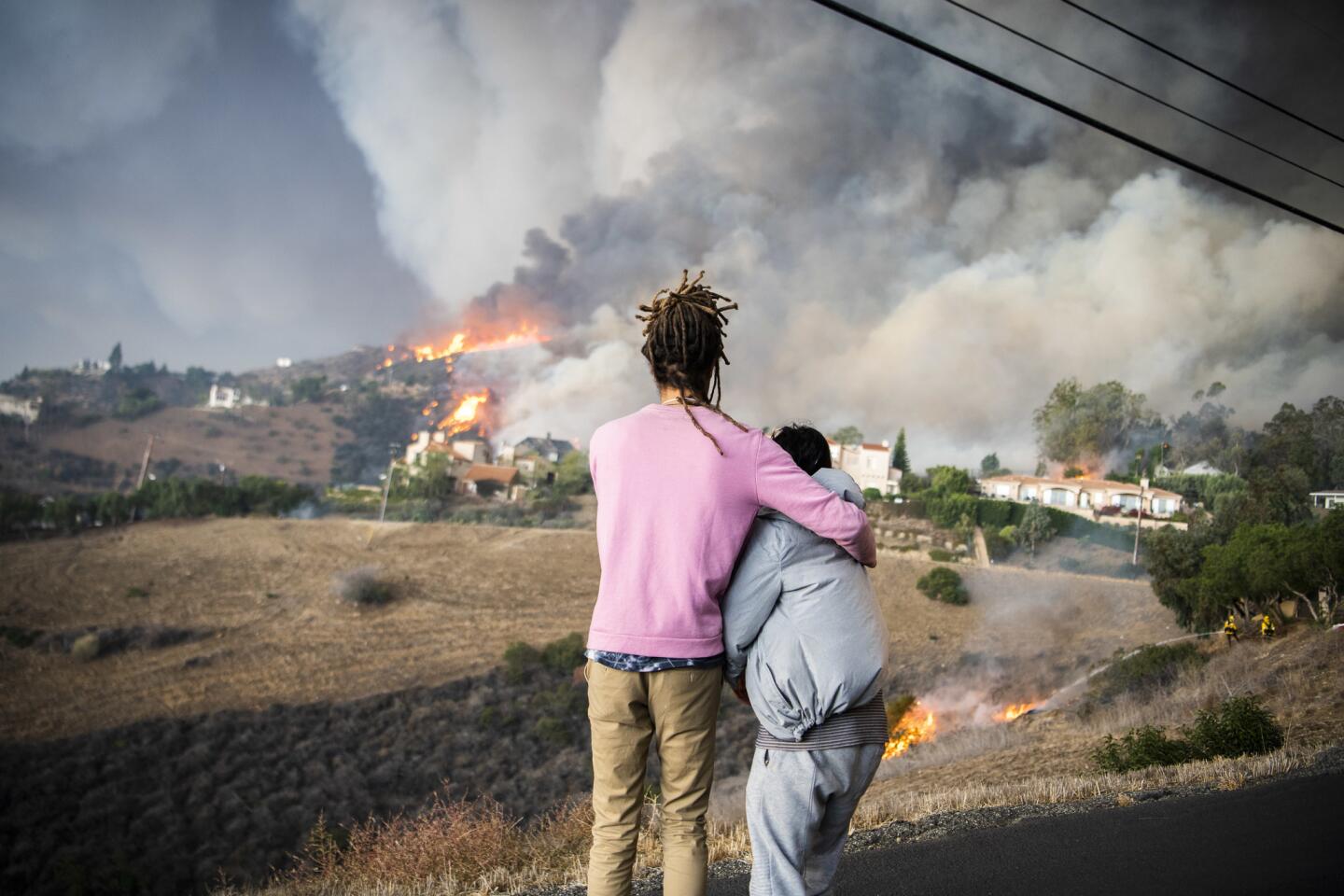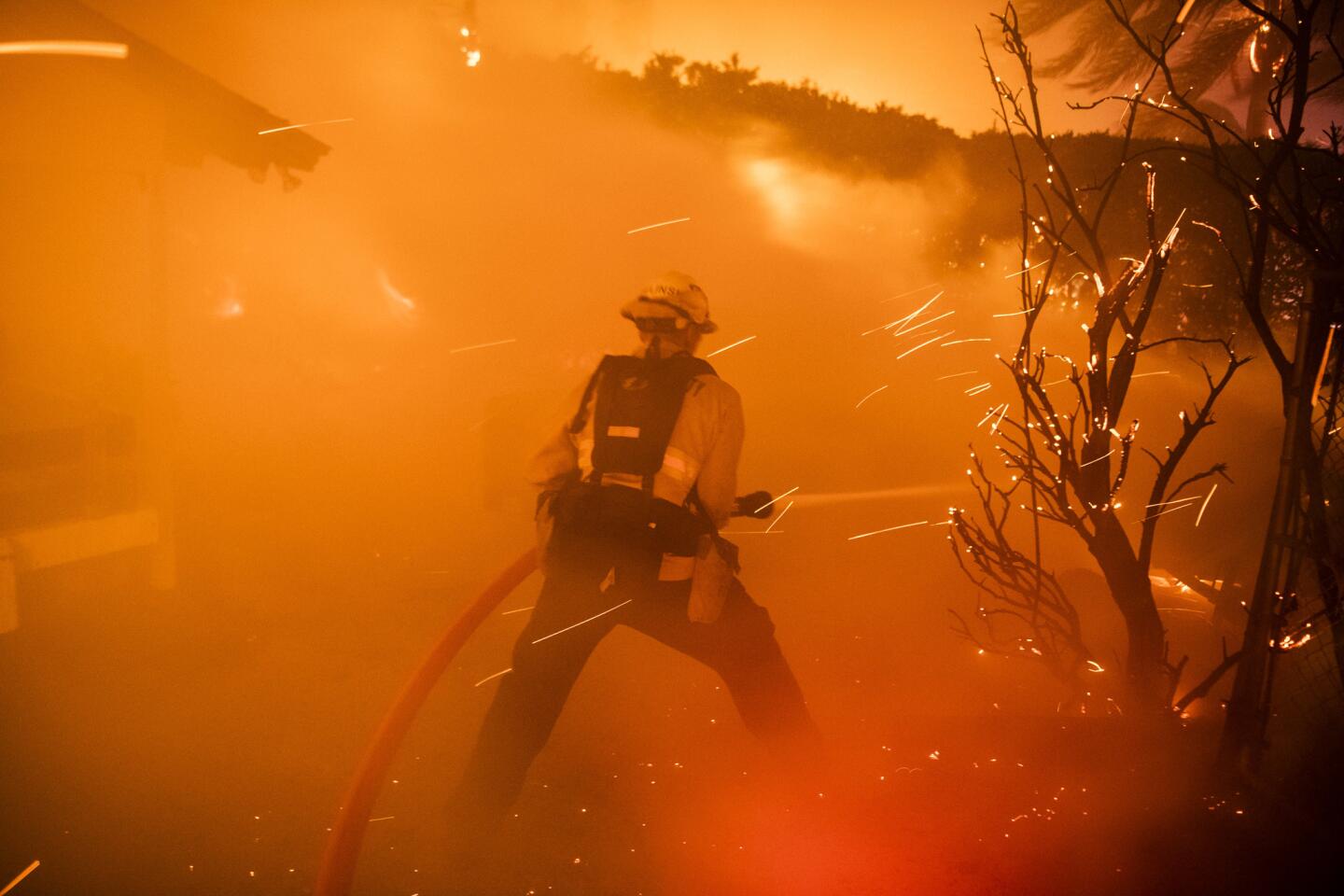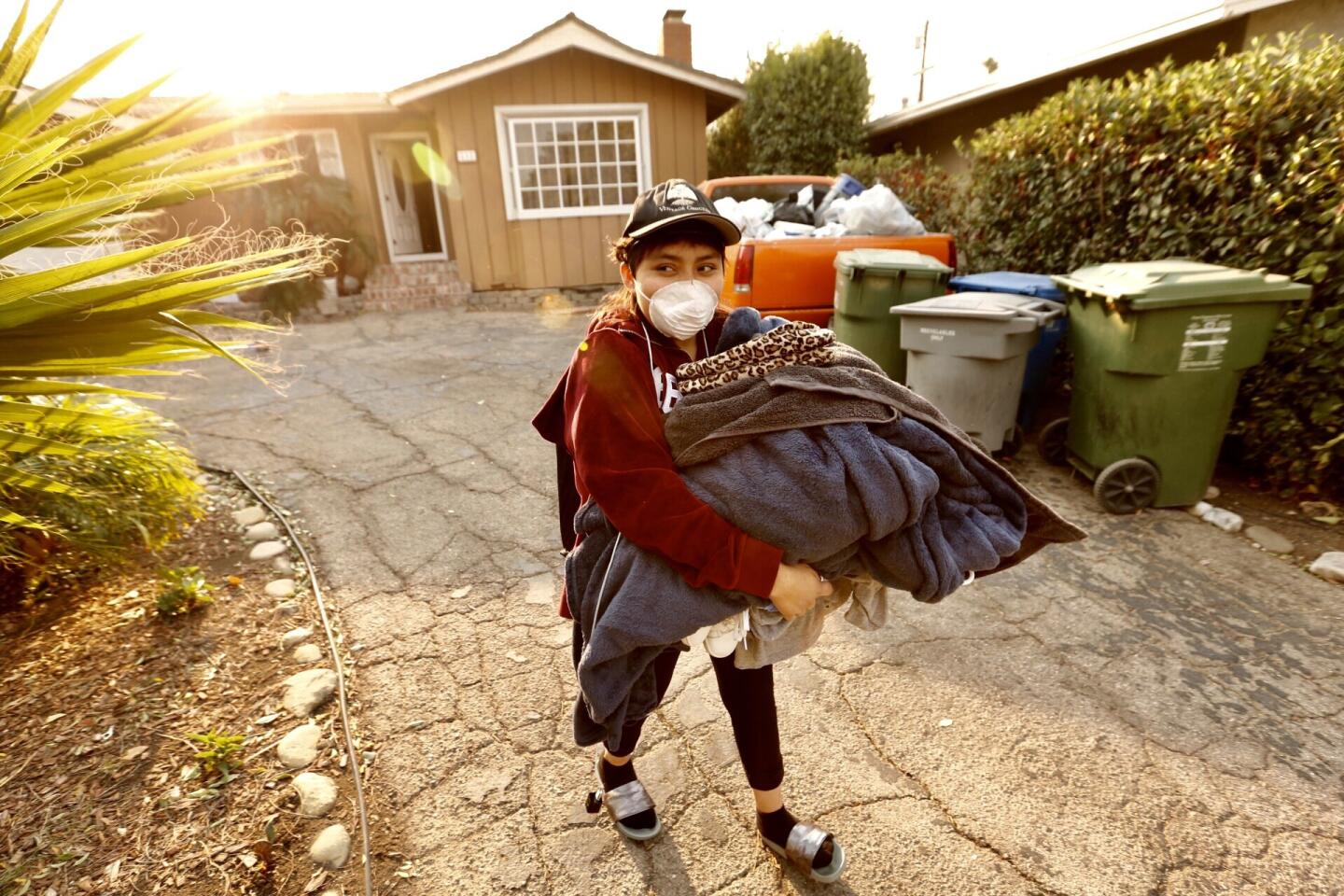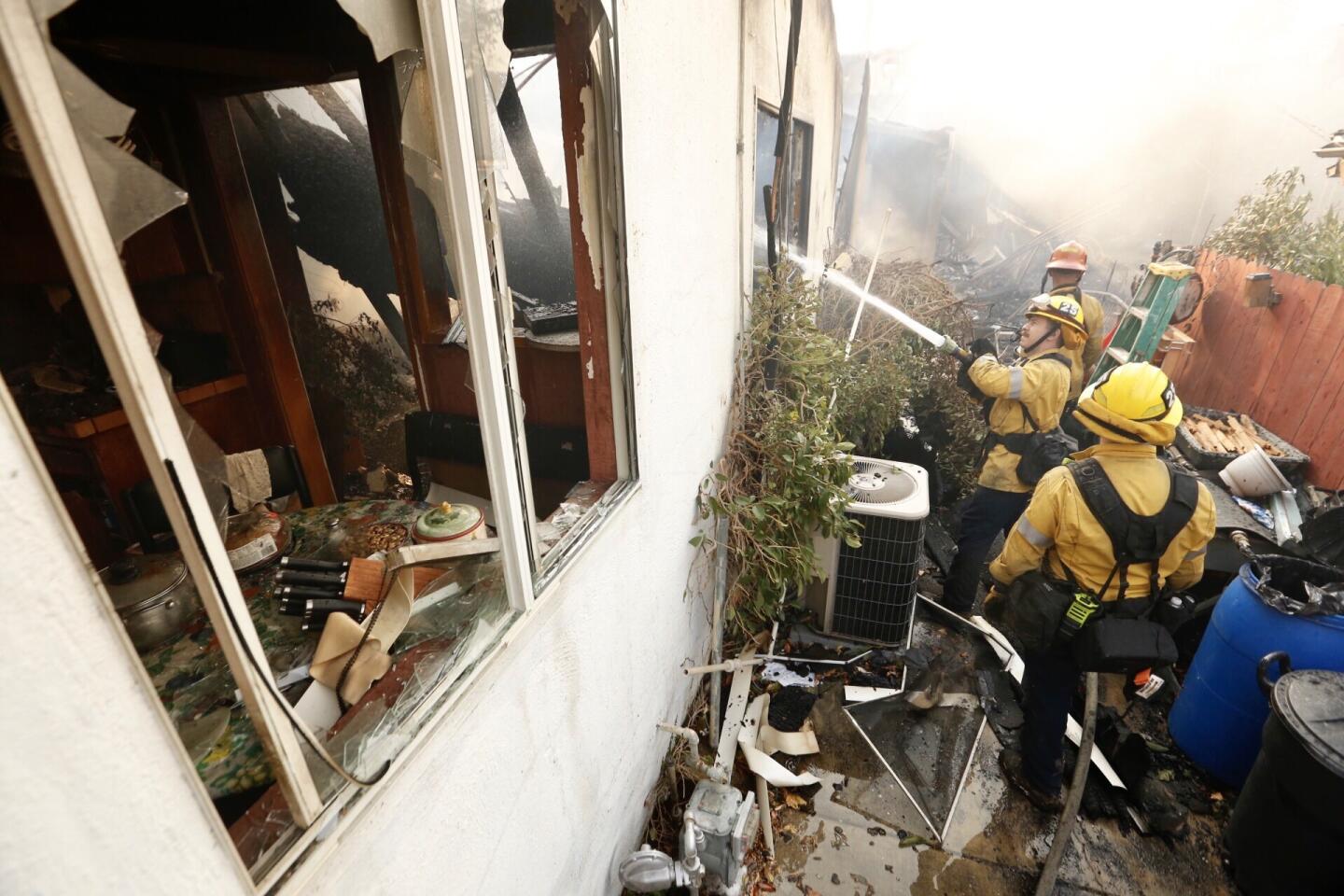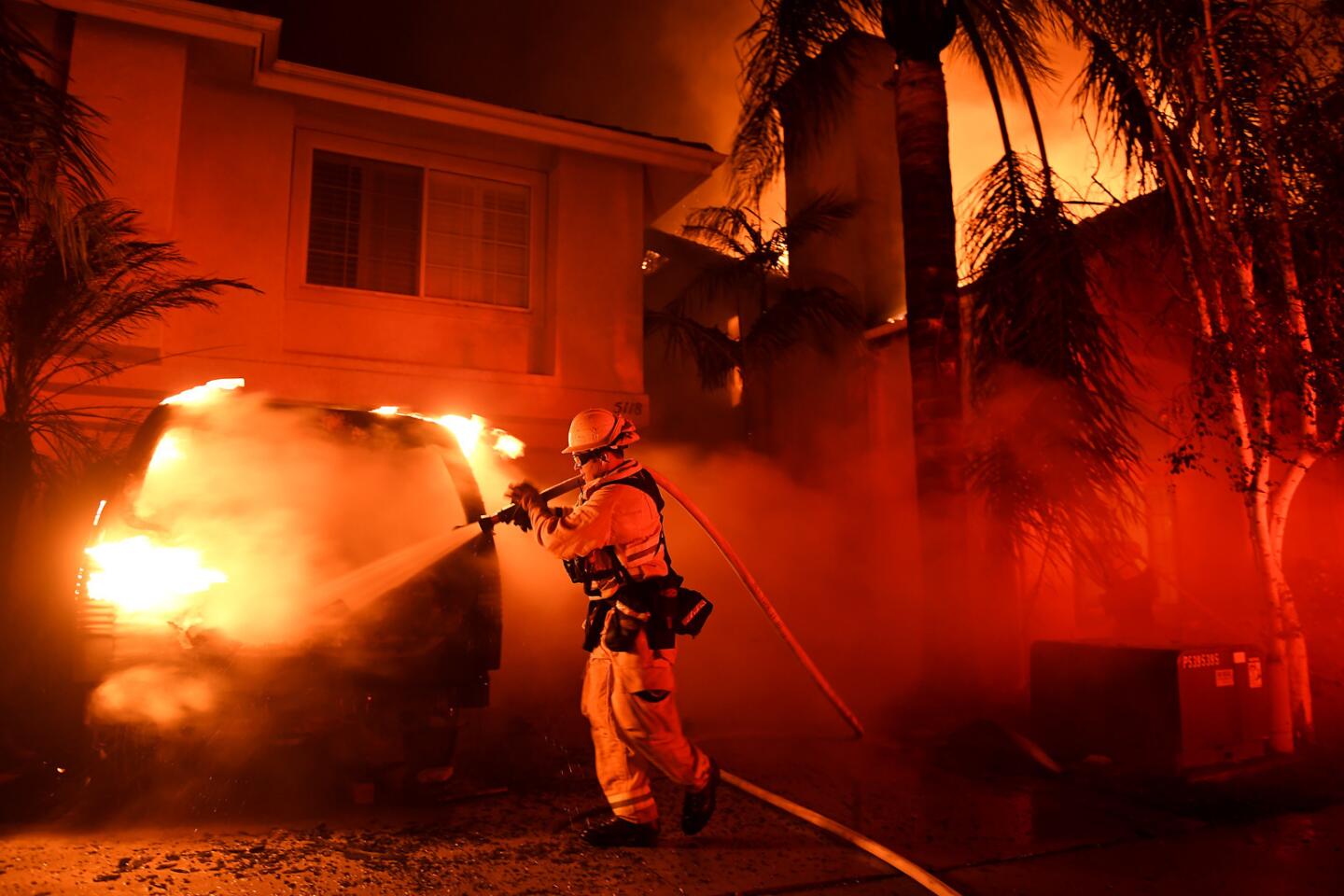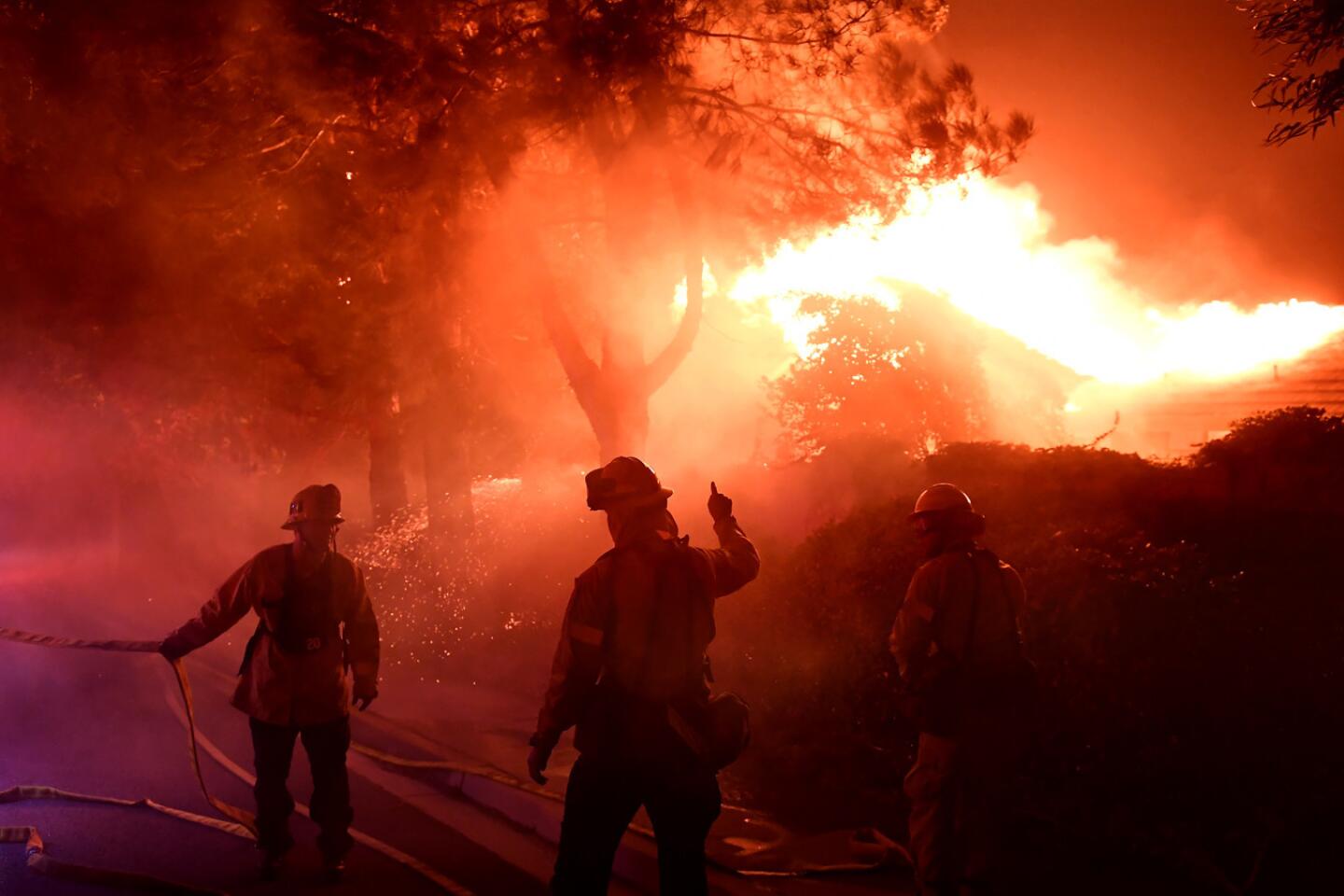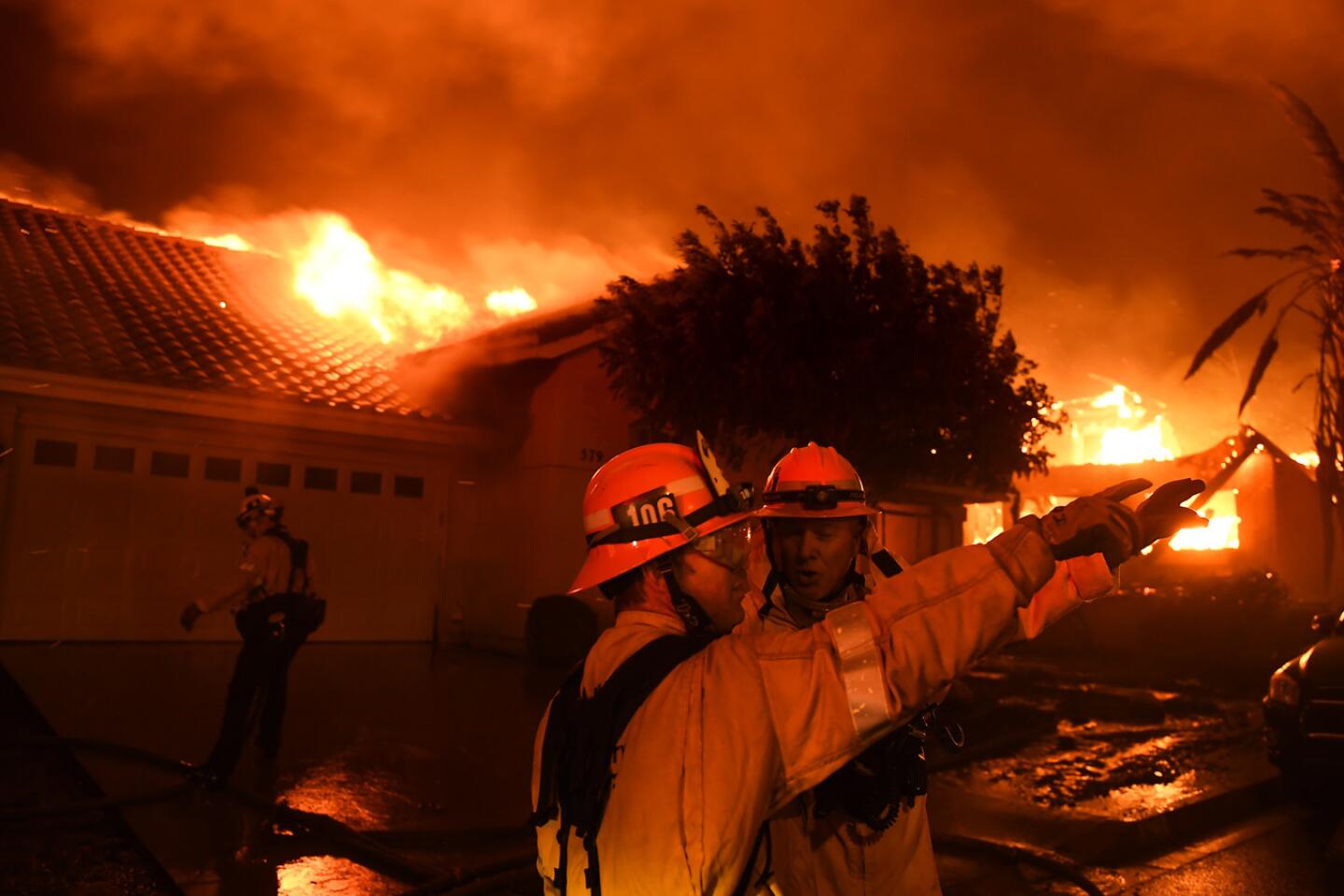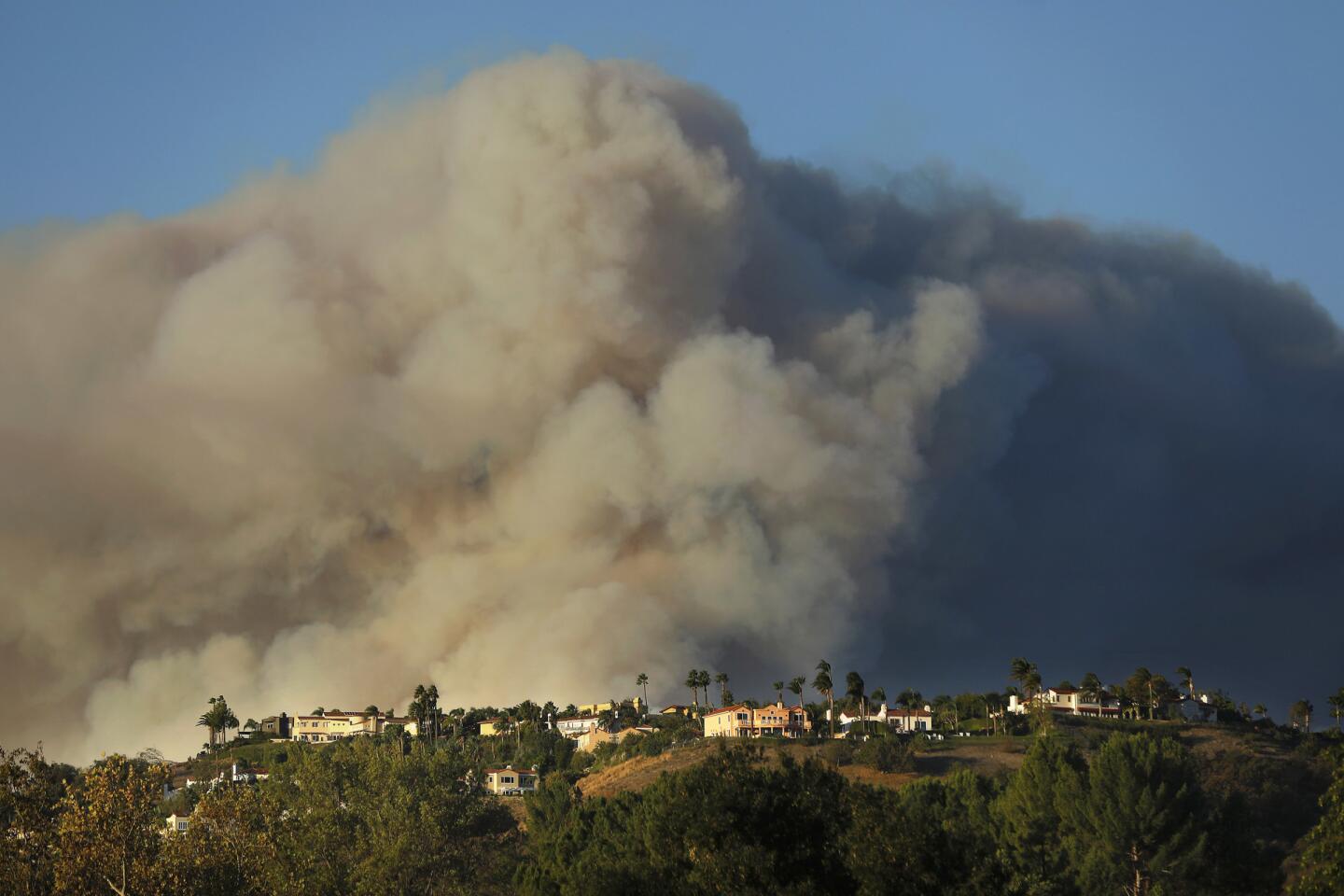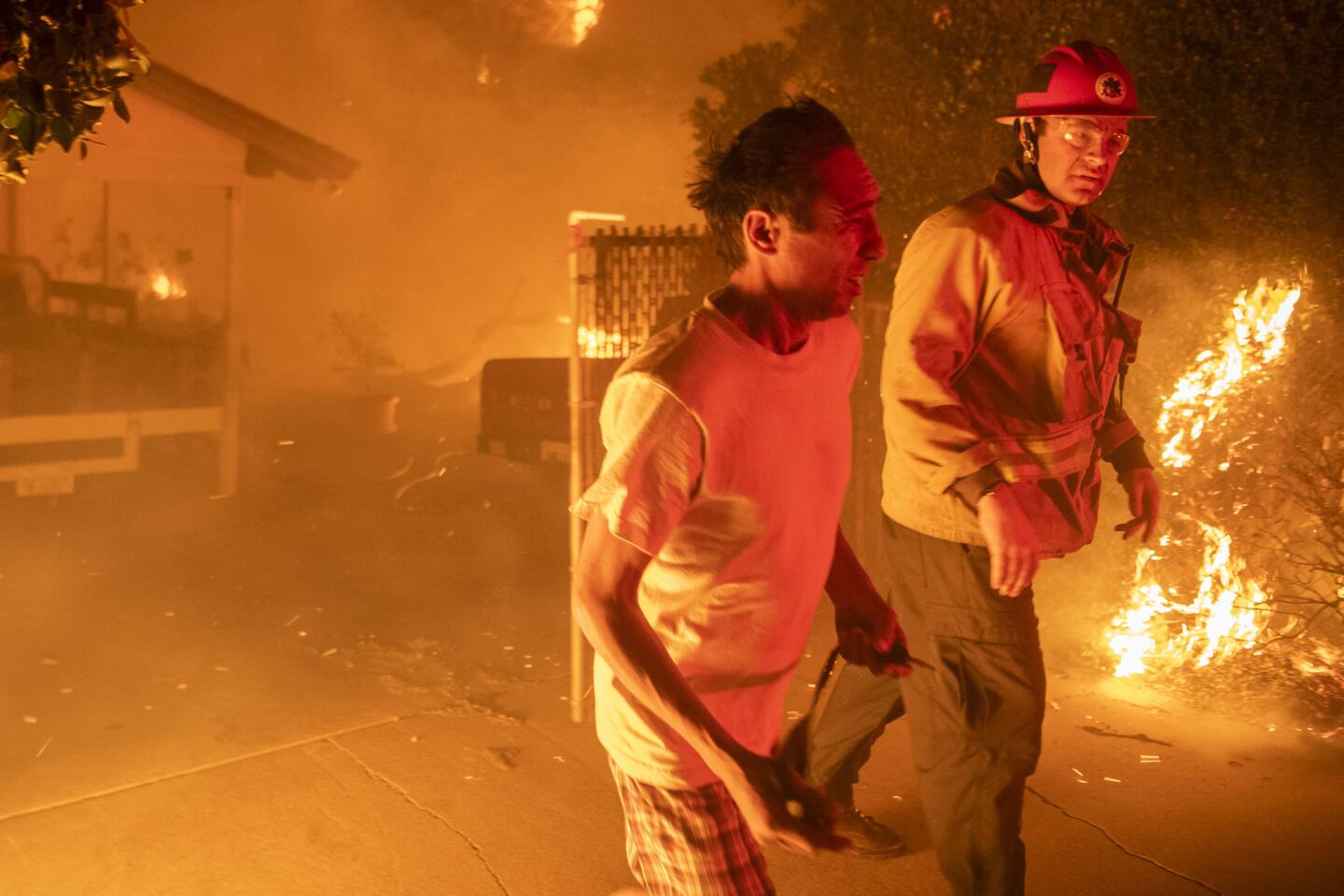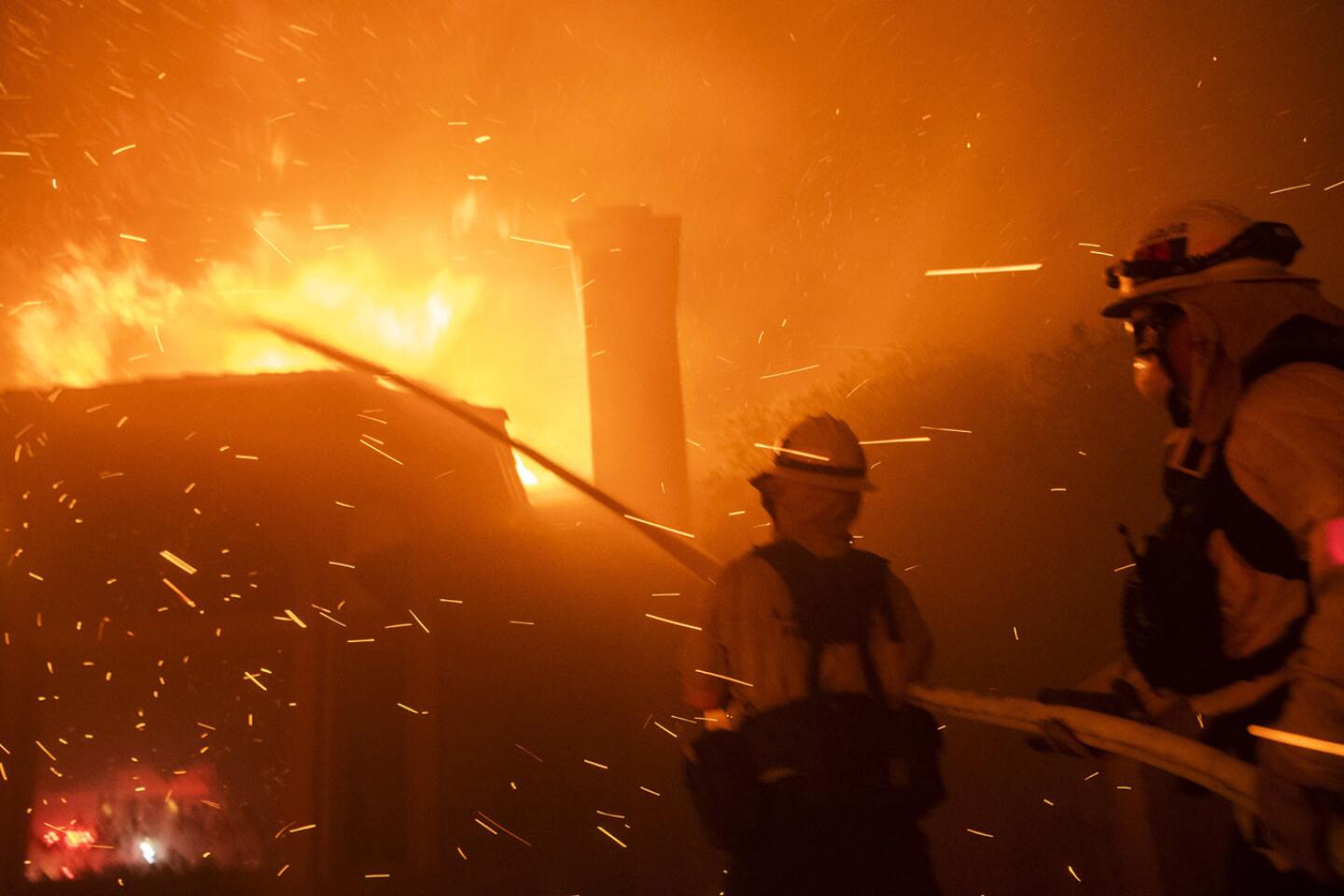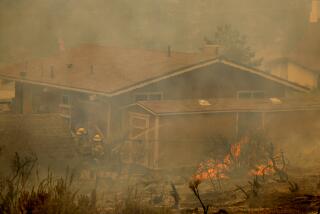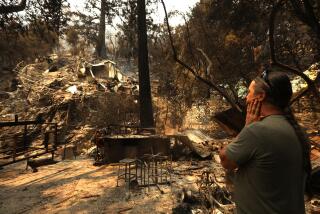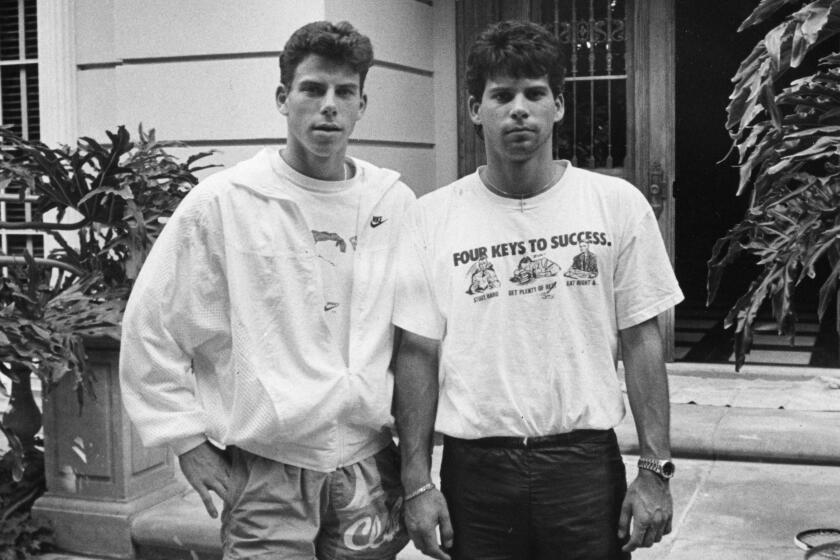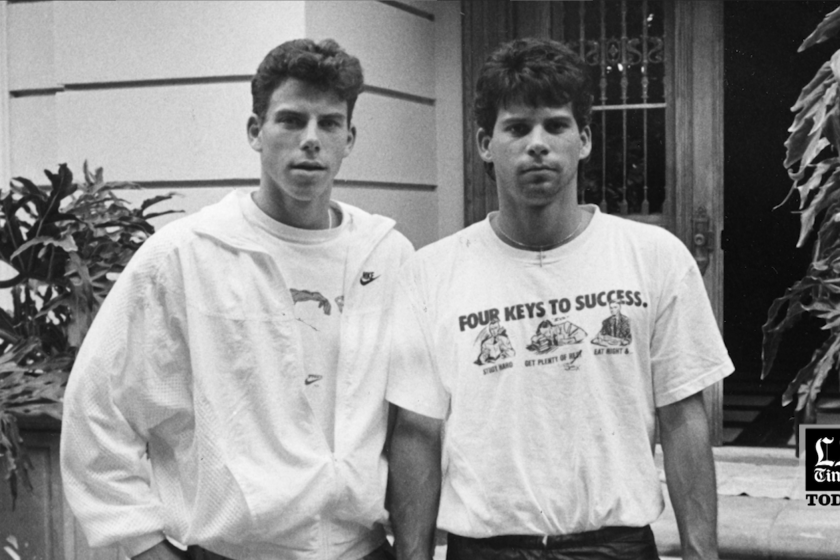A family watched on TV as their home burned. Then they saw a second one burn
An untold number of homeowners have had their lives upended by the Woolsey fire. Few, however, may have felt the fire’s destructive power more than Mark Bakalor.
On Thursday night, not long after the fire first roared to life, Bakalor and his family fled their Oak Park house as the flames approached.
Bakalor then turned his attention to his parents, who had lived for years in a house on Lobo Canyon Road in Agoura Hills, and then to his in-laws, who lived in Bell Canyon. For Bakalor, both houses were too close to the fire, which was spreading quickly and in several directions.
“I called my parents and said, ‘Look, it’s about to jump the freeway and heading your way. I need you to pack your photo albums and leave.’”
His in-laws had already left, but told Bakalor on the phone that they were intent on returning. It was more than just a house to the couple: Bakalor’s father-in-law is Mike Garson, a pianist who had played for decades with David Bowie as well as many other famous musicians. Instruments, equipment, memorabilia and decades of memories were in a recording studio on the property.
Bakalor urged Garson and his wife to stay away. The couple reluctantly agreed.
The following night, Bakalor was in the car, returning from a shopping run for toothbrushes, clothes for his child and other necessities they had fled without packing, when his phone rang.
“It’s gone,” his mother said. “The house is gone.”
“How do you know?” he asked.
“We’re watching it burn on TV.”
It had been the couple’s dream house — an 11,300-square-foot modern mansion built nearly 20 years earlier on more than 20 acres nestled in the Santa Monica Mountains. There was an 18-seat movie theater and a library.
But the Woolsey fire wasn’t done with Bakalor’s family yet.
Less than an hour later, a news helicopter trained its camera on Bell Canyon. It zoomed in on Hitching Post Lane. His in-laws’ street.
A creeping disbelief settled in as he watched with his brother-in-law. The camera panned to the smoldering remains of a house with a pool and hot tub. Only the chimney remained.
Bakalor knew that chimney. He knew that pool.
It looked as if the walls of the studio were still standing, but flames were everywhere. When a Los Angeles Times reporter visited the house Sunday, those walls were gone. The charred, flattened husk of a piano was visible from the driveway. A blackened mess of tangled piano wires marked the floor, near what appeared to have been a speaker.
As many residents were still coming to terms with the devastation on Monday, six strike teams were sent to Bell Canyon and the West Hills to look for flareups, said Los Angeles Fire Department Deputy Chief Trevor Richmond.
“It takes us a while to get into that battle rhythm after the initial action,” Richmond said. “We are at that point now.”
The status of the blaze on Monday, Richmond said, was a “wind test.”
“We are standing by and watching, how impactful will the wind be on the hot spots inside the burn area. Will it bring it up and throw the embers into the green fuel?” he said. “We are watching. During that time, [crews will] cut an active line to put space between burned and unburned fuel.”
This is a “dirty burn,” where flames chewed through portions of the Malibu canyons but left whole swaths of forest, chaparral and homes untouched.
Richmond said that the harsh winds can push embers about a quarter-mile ahead of the front of a fire.
“We are not out of the woods yet,” he said. Windy conditions could persist through December, he said. “We have to remain vigilant.
“Right now, any Santa Ana winds last two to five days. As the days go further along and we are in continued winds, the fuel gets drier, the air gets drier. It makes it harder for us to sustain an active line around the perimeter.”
“We have to be strategic about aerial assets,” Richmond said. Planes are grounded if water drops scatter in the high winds and don’t reach the ground. Helicopters can make more strategic drops in the heavy winds better than fixed-wing aircraft, he said.
When winds get above 20 mph, they start evaluating whether fixed wing are applicable.
More to Read
Sign up for Essential California
The most important California stories and recommendations in your inbox every morning.
You may occasionally receive promotional content from the Los Angeles Times.




